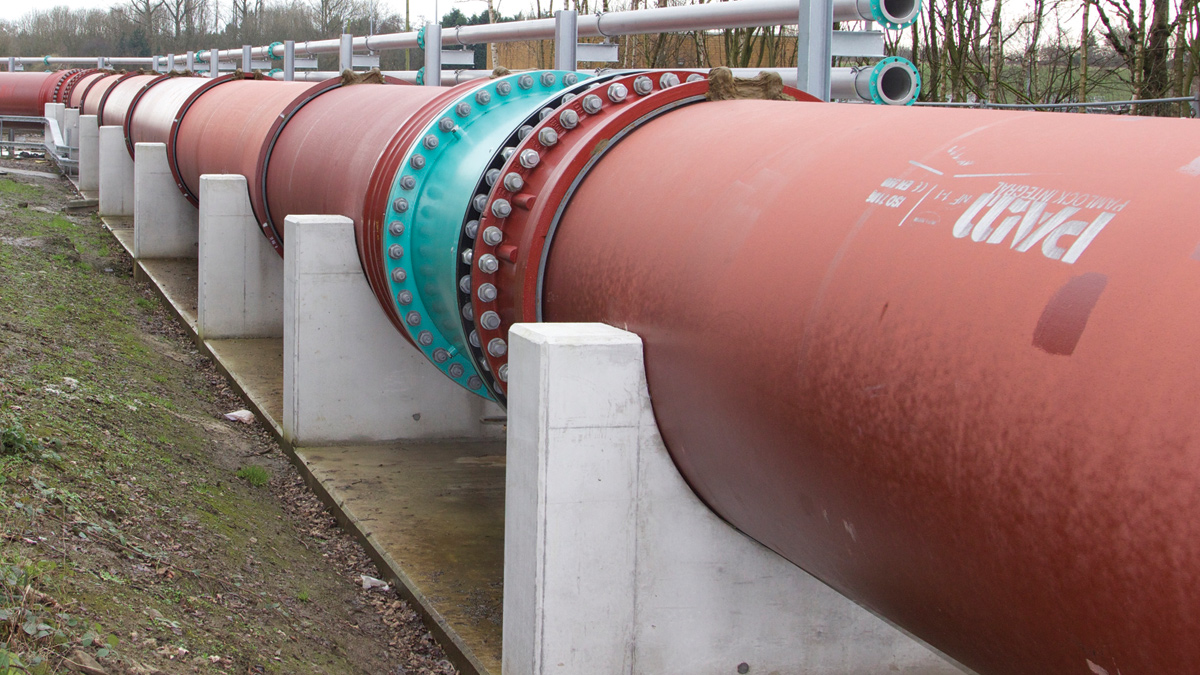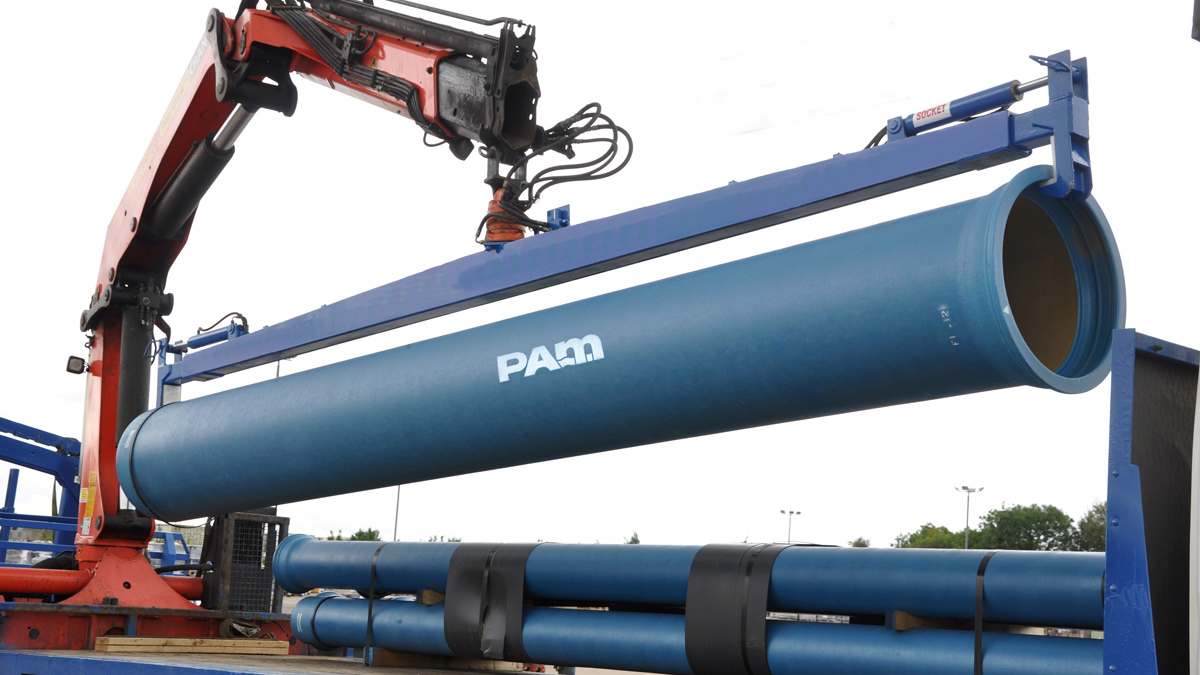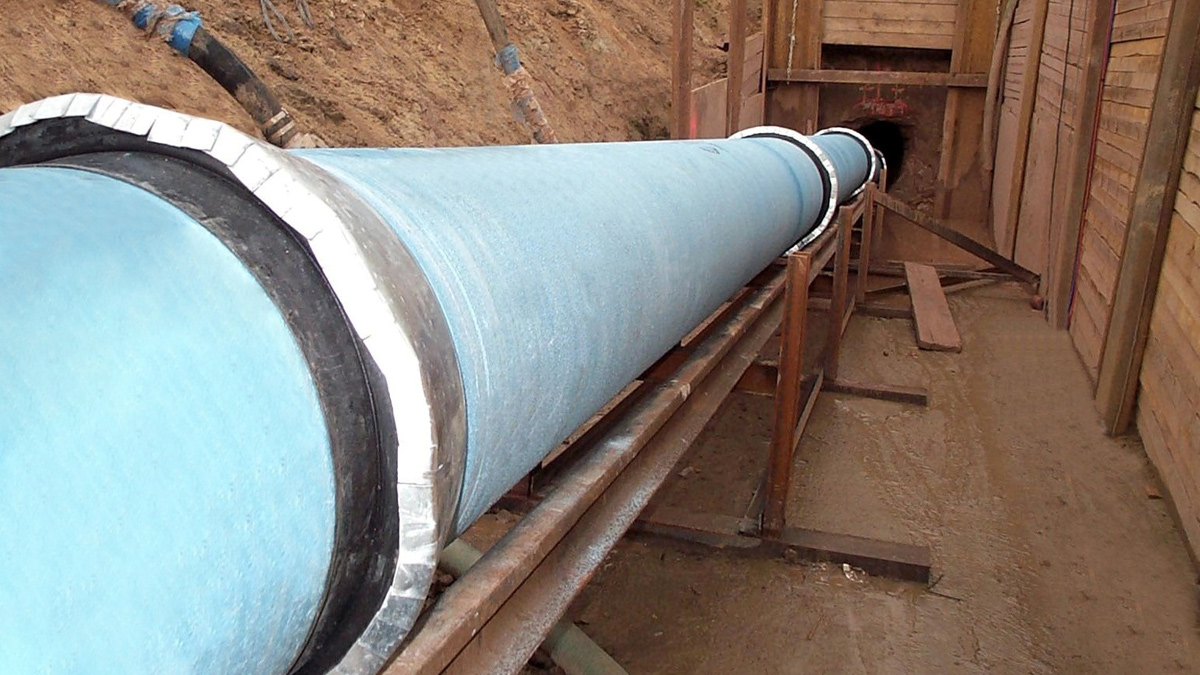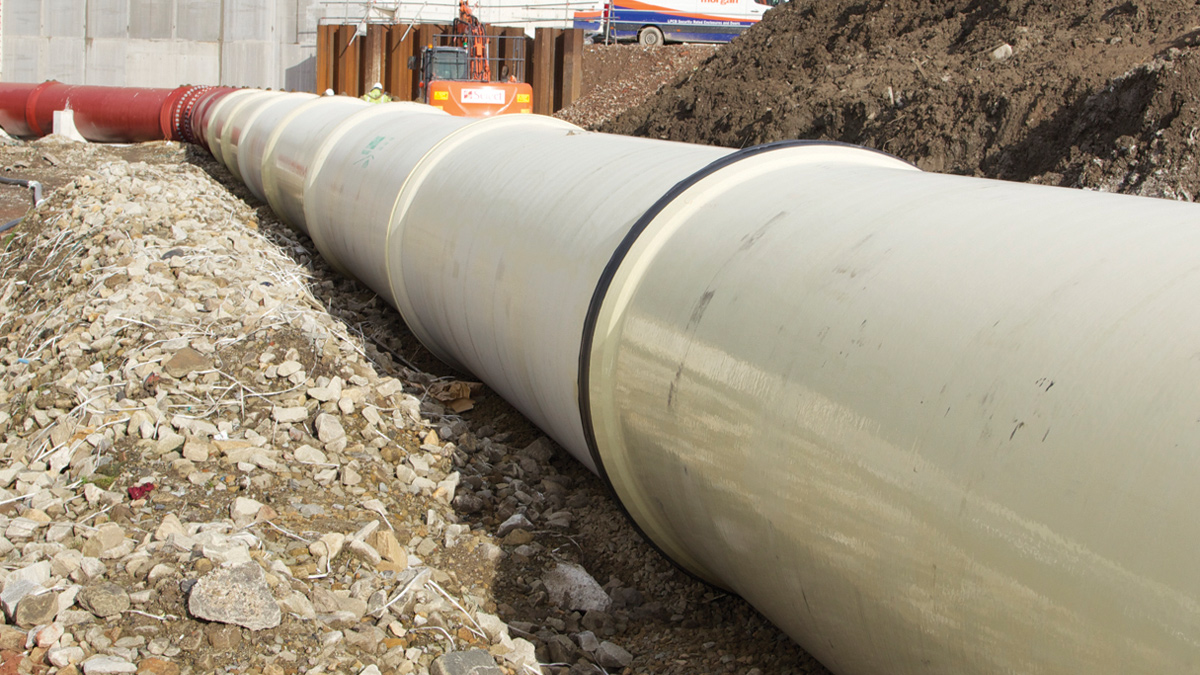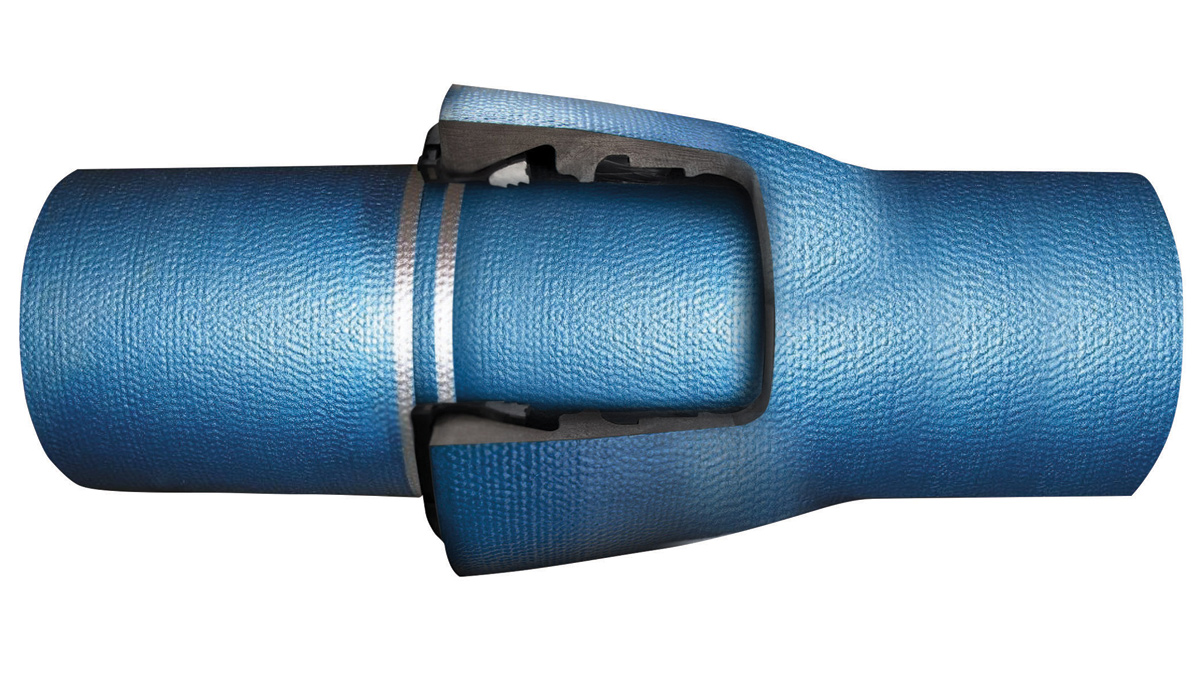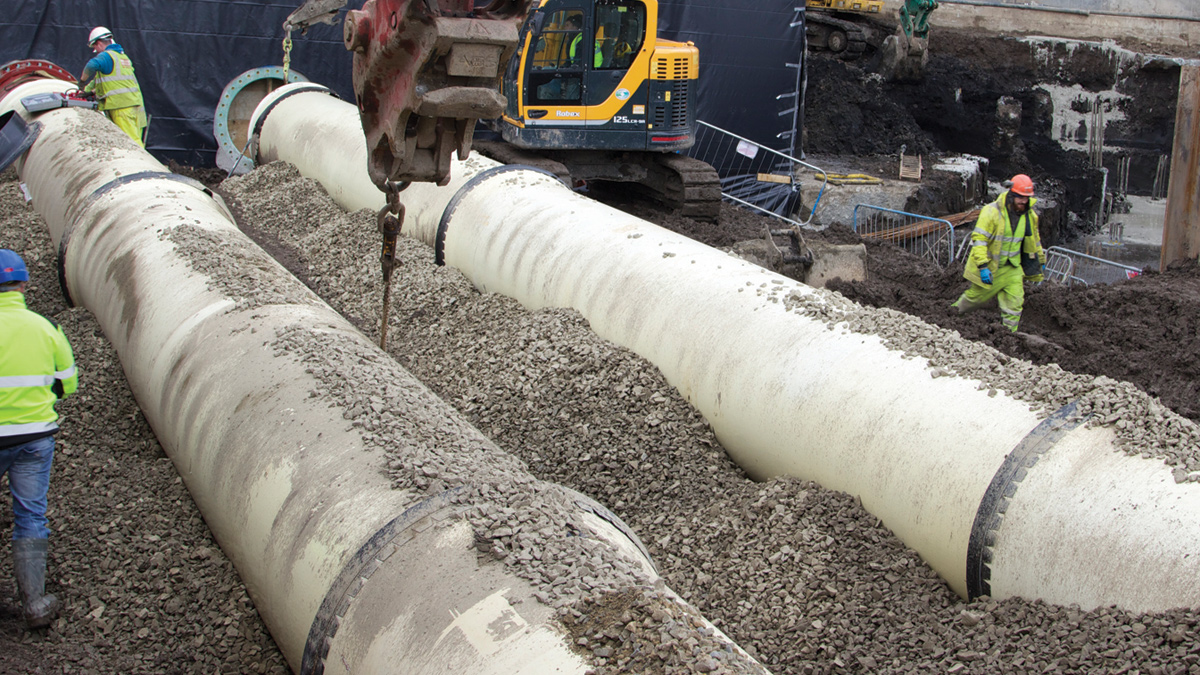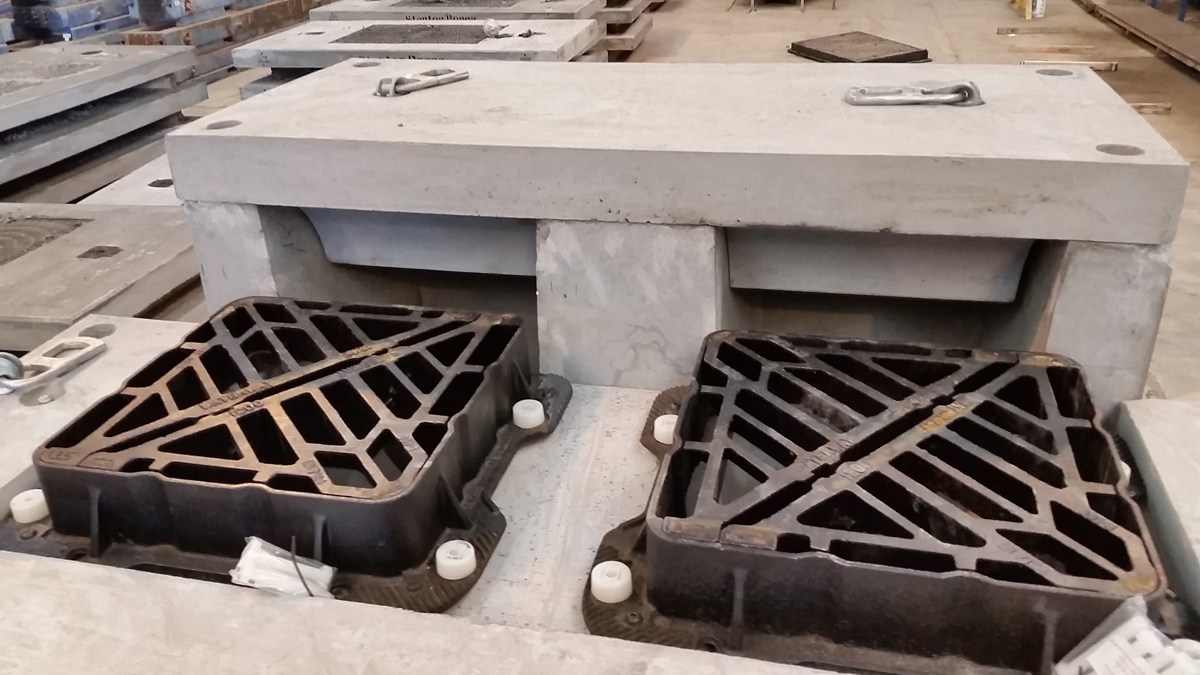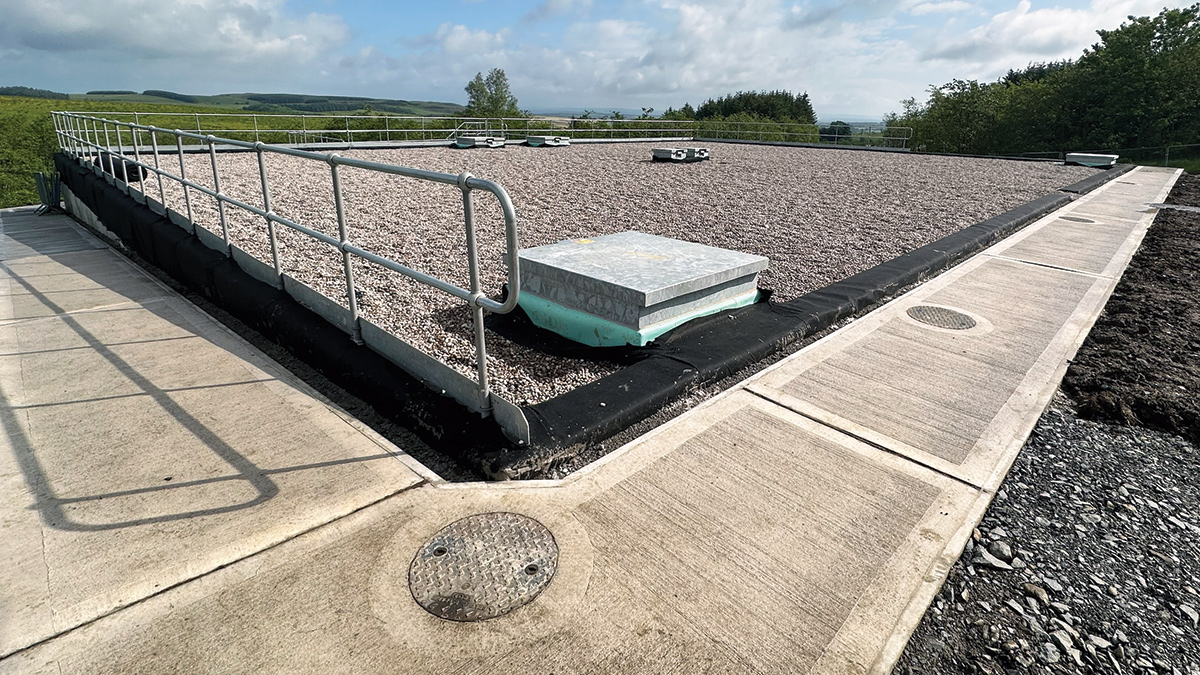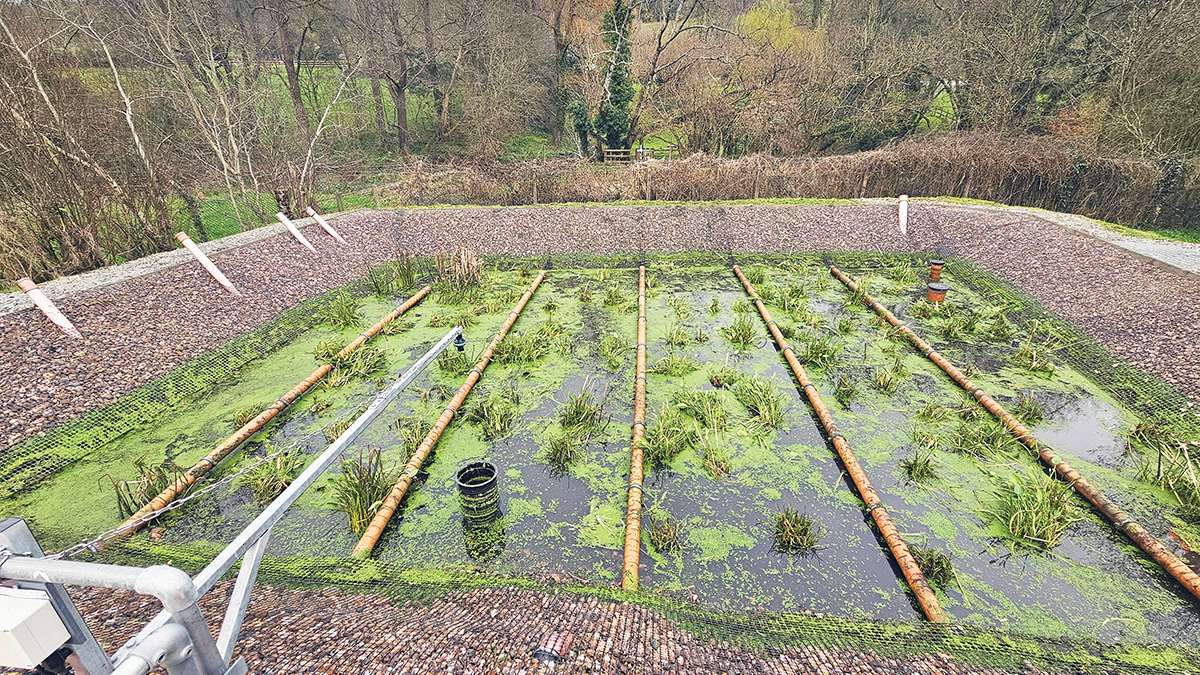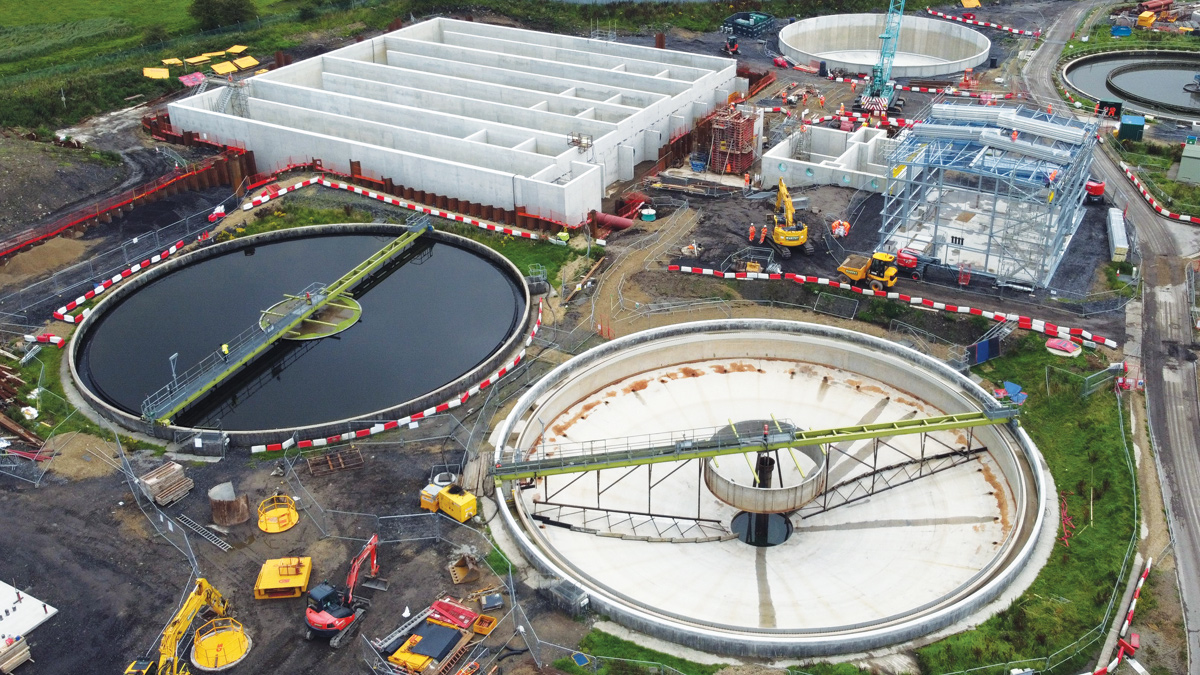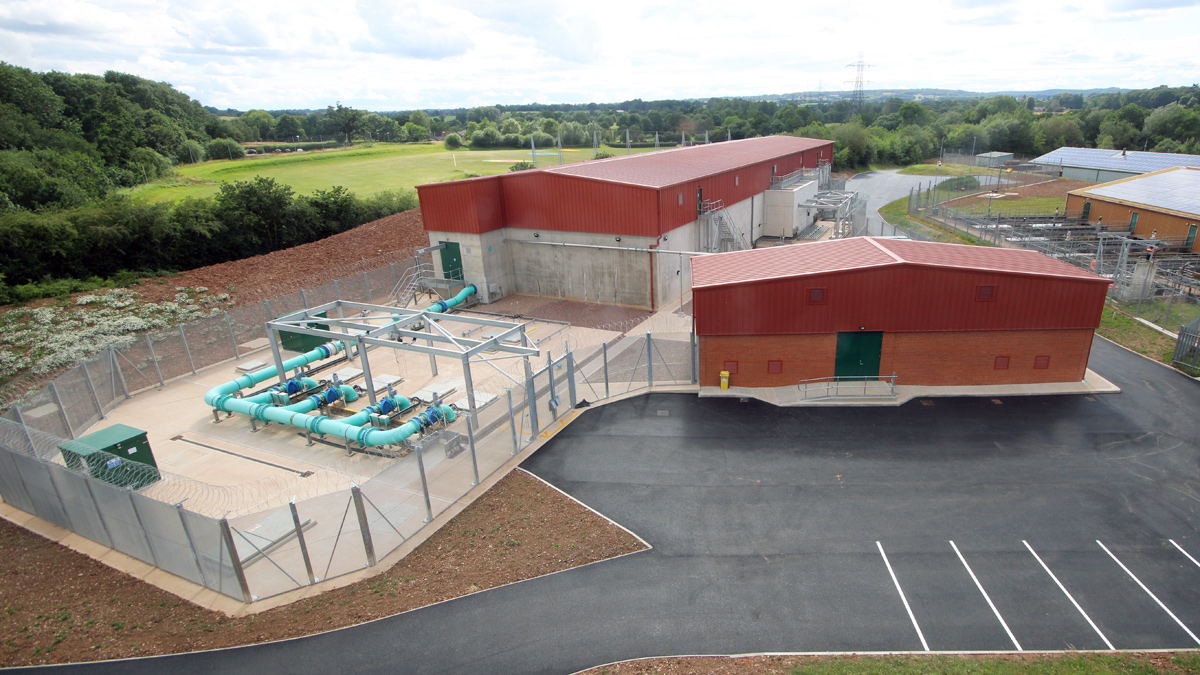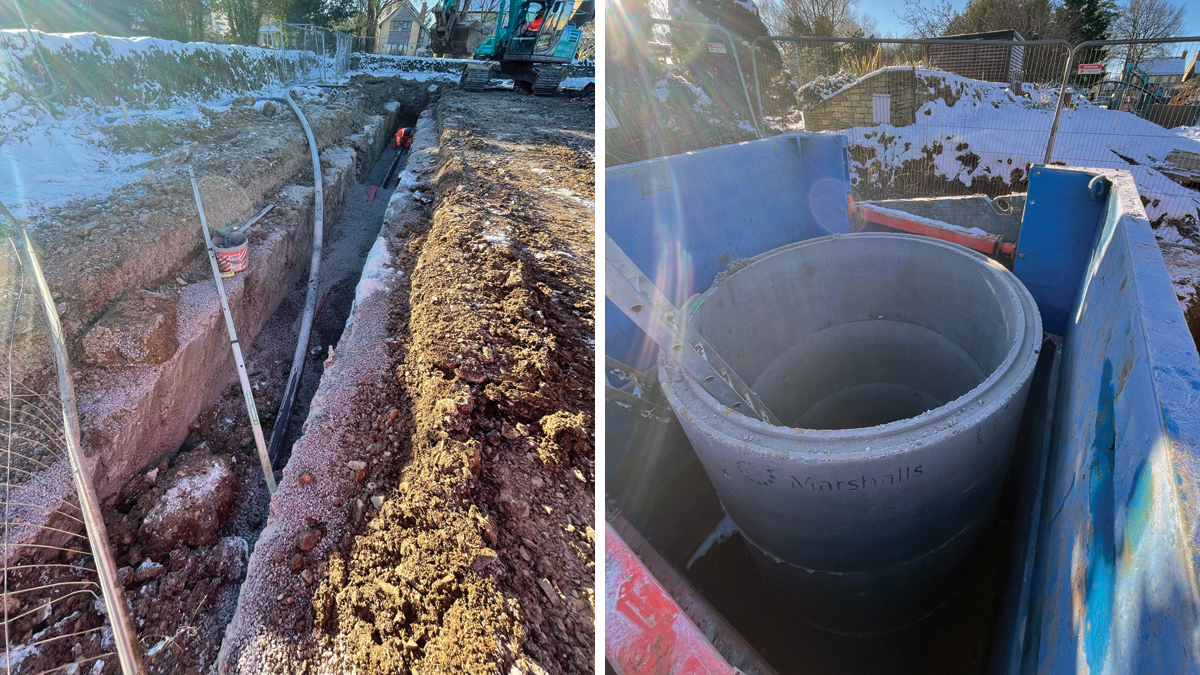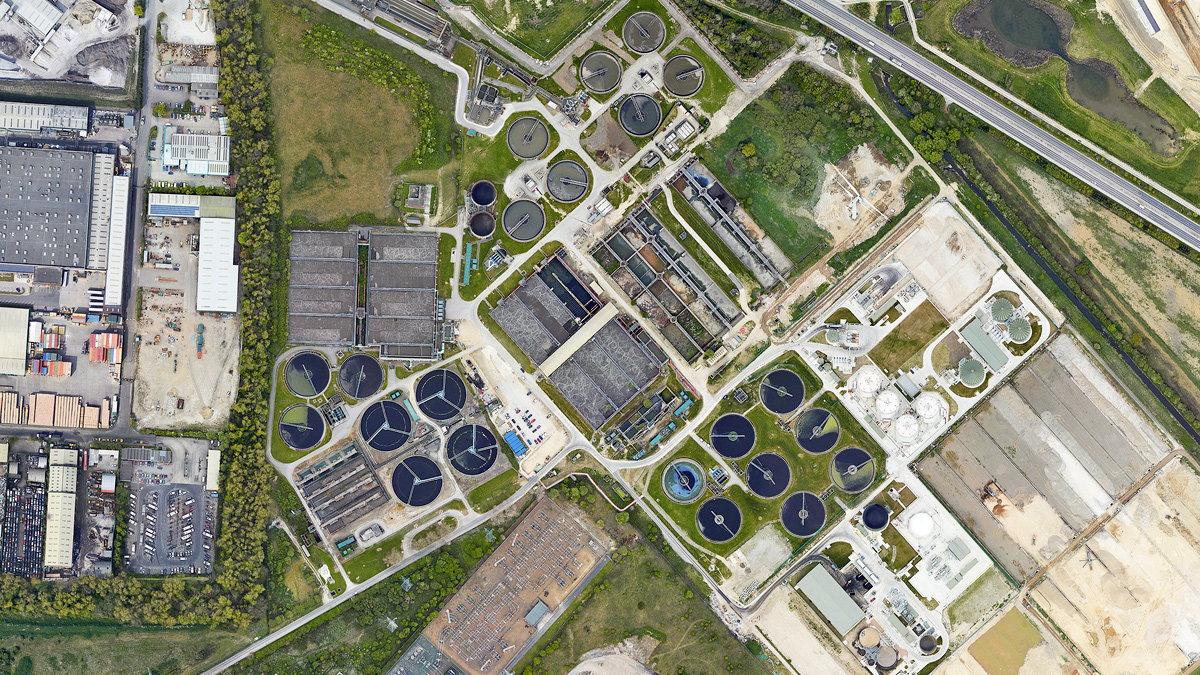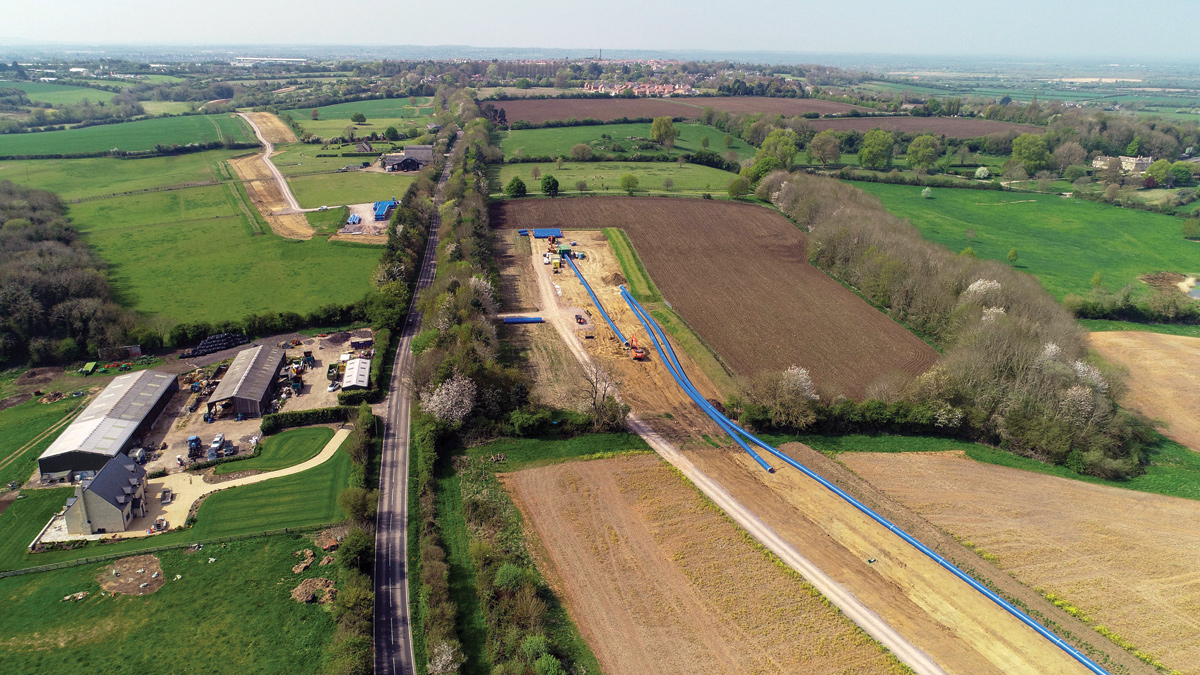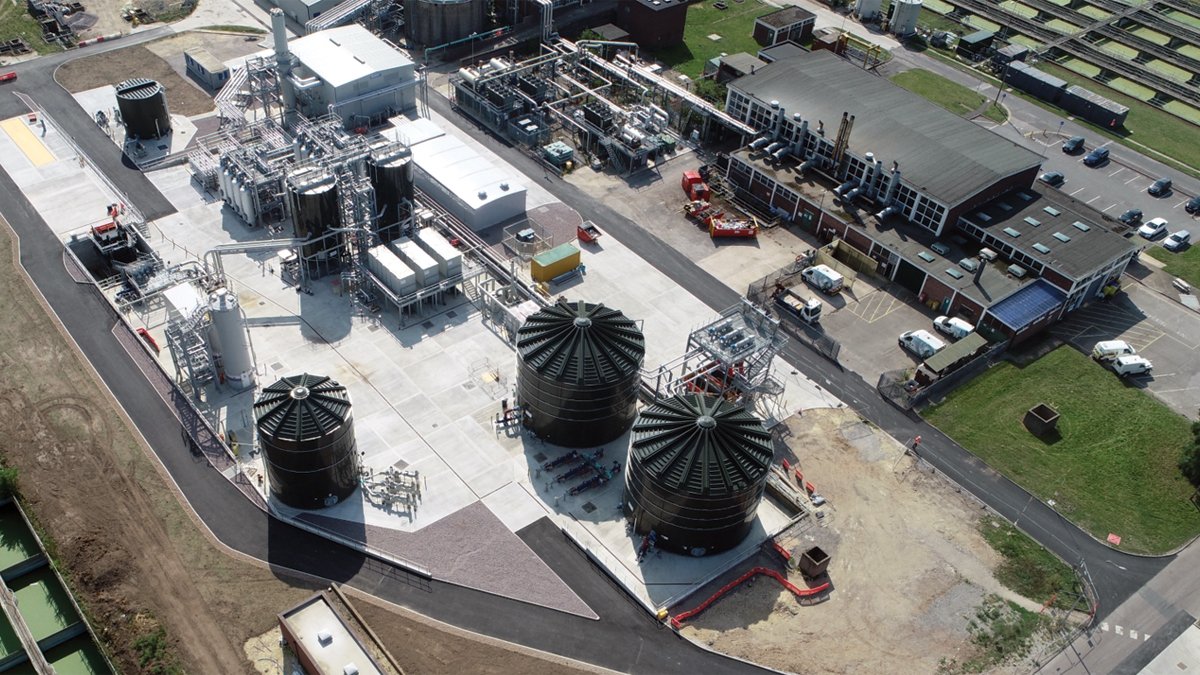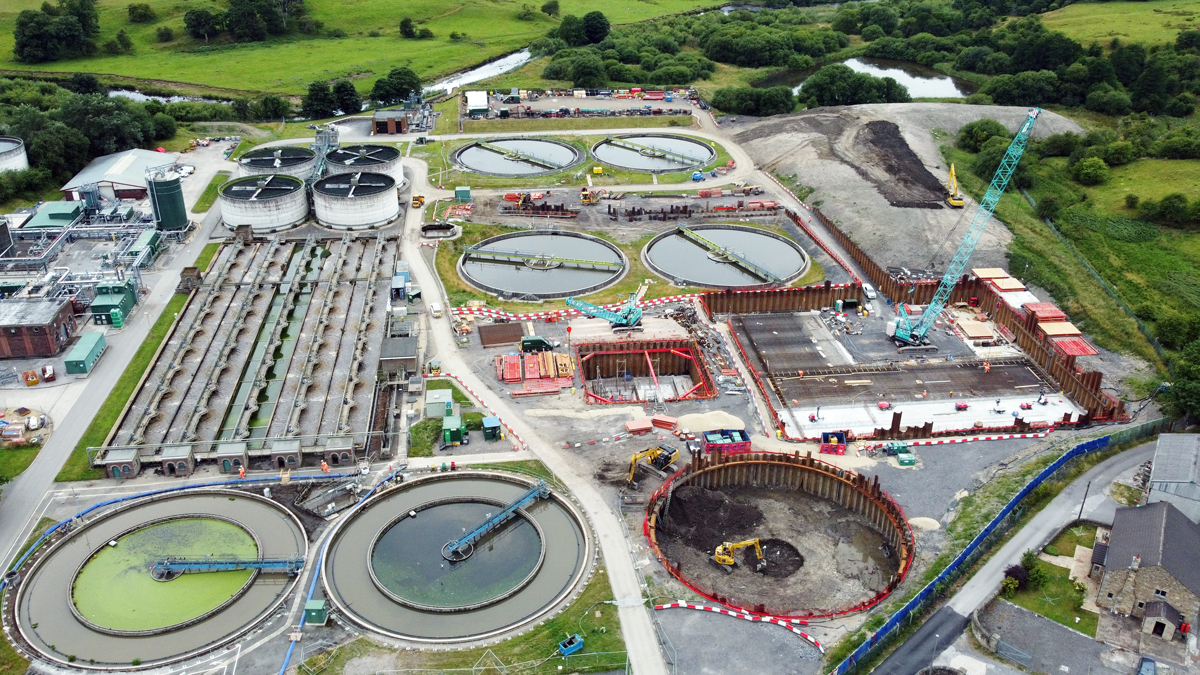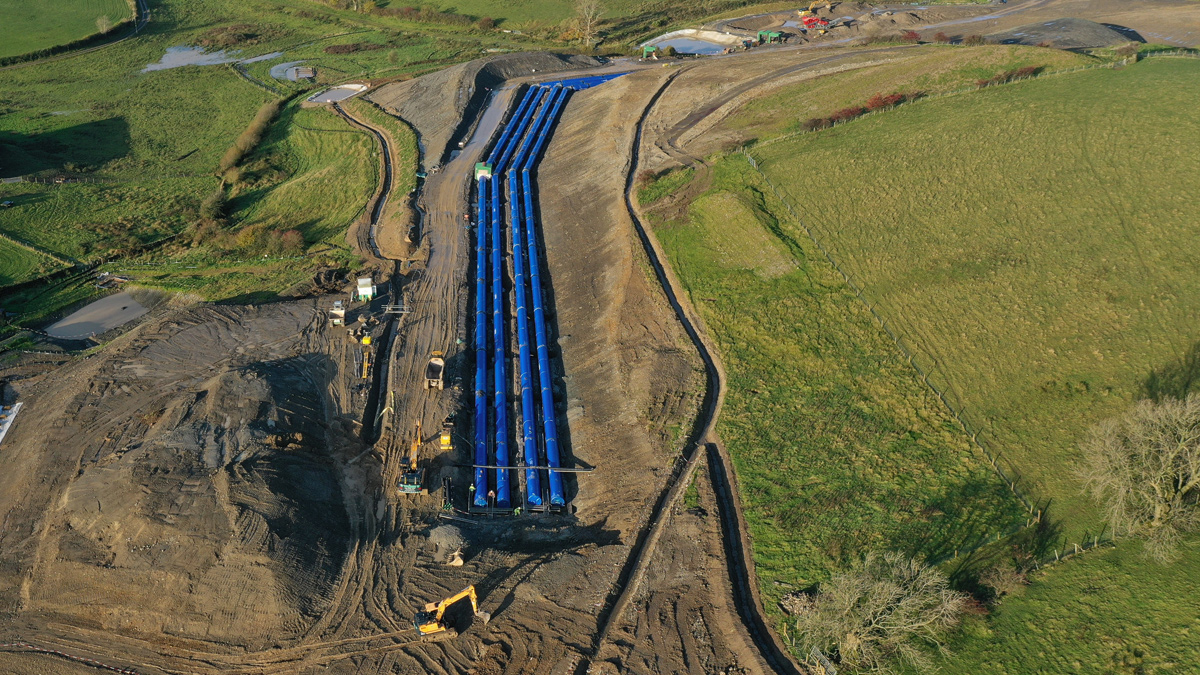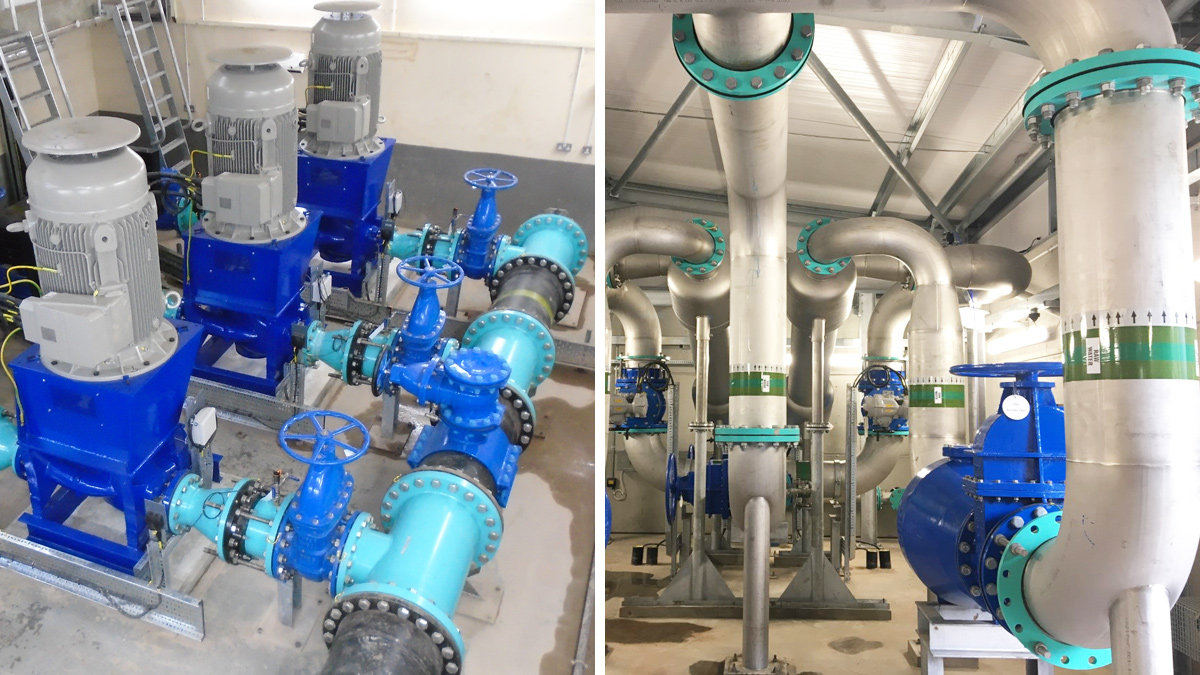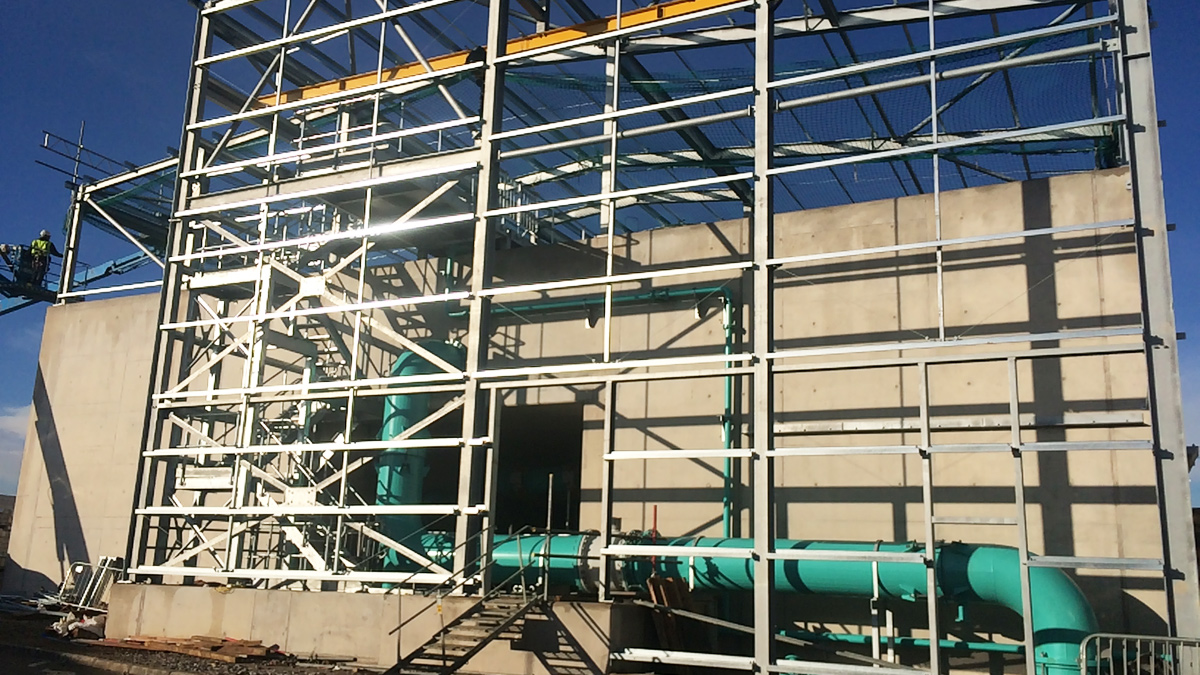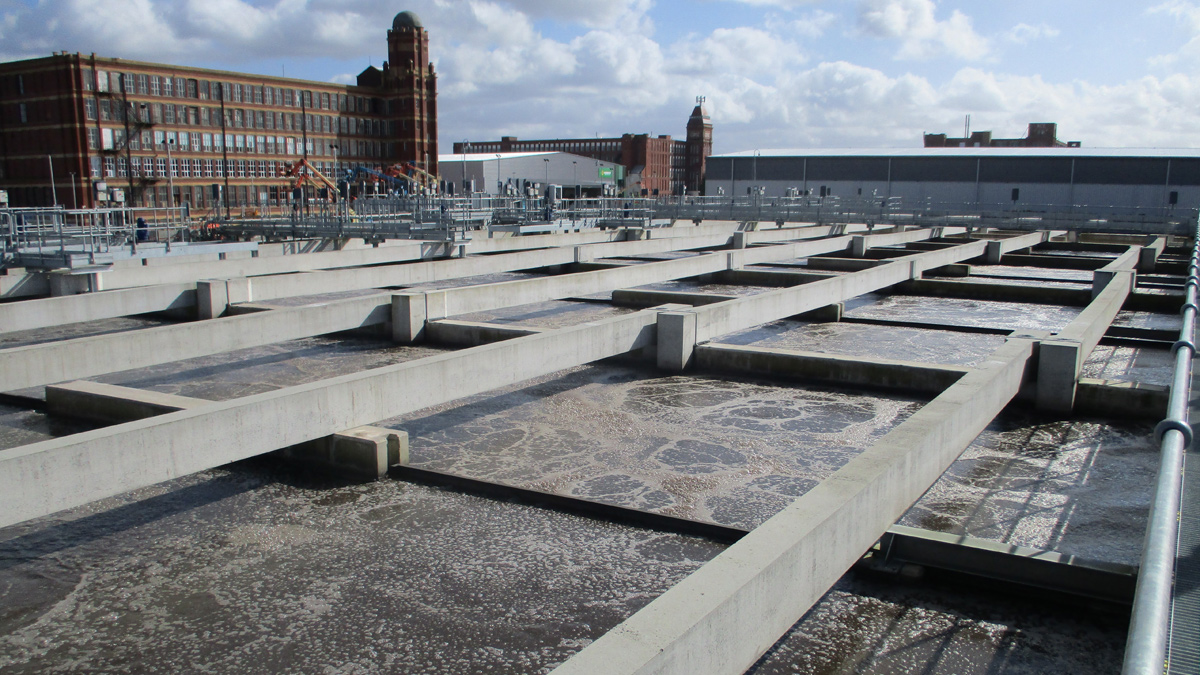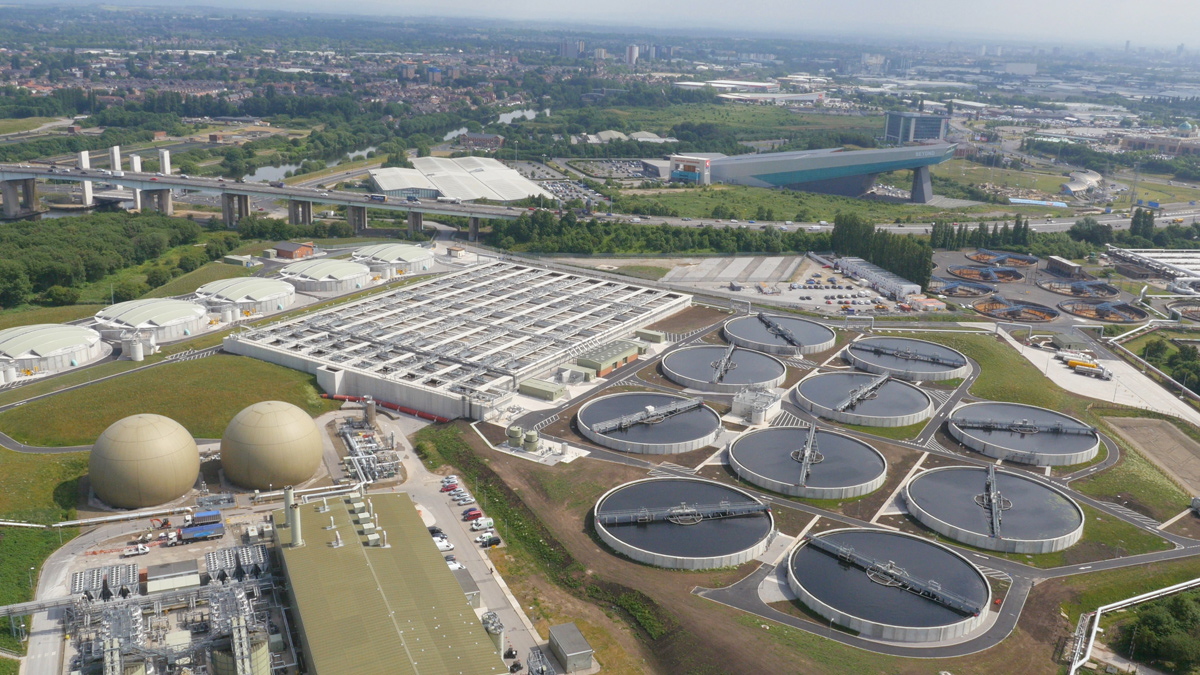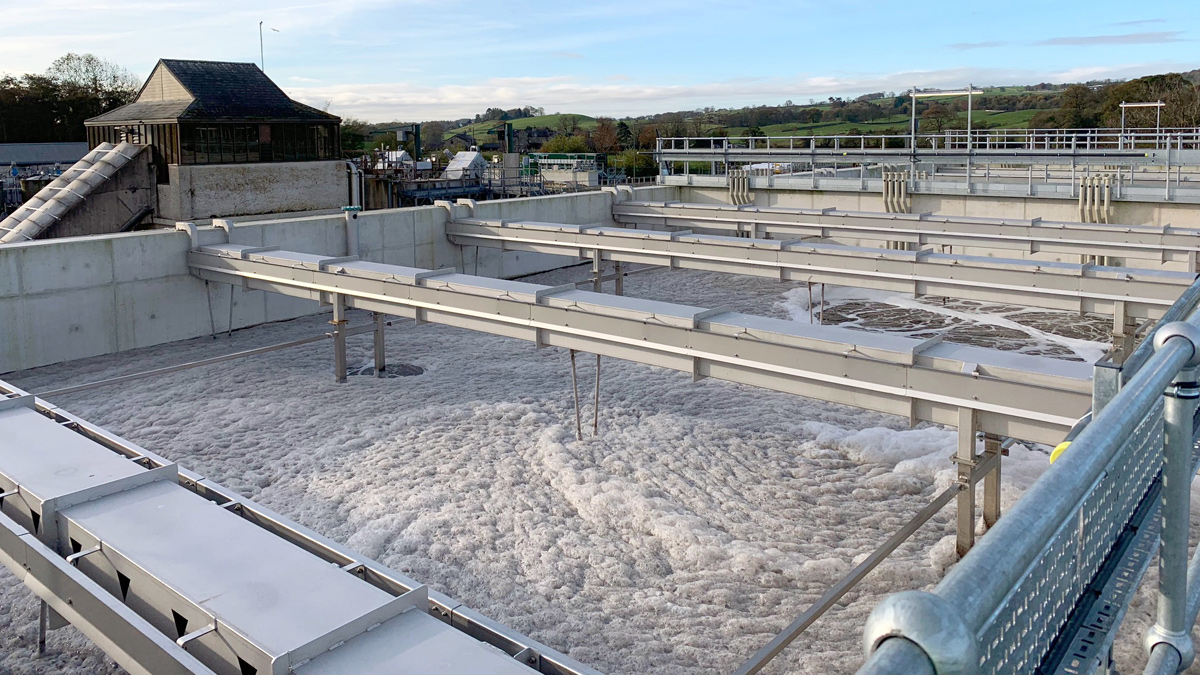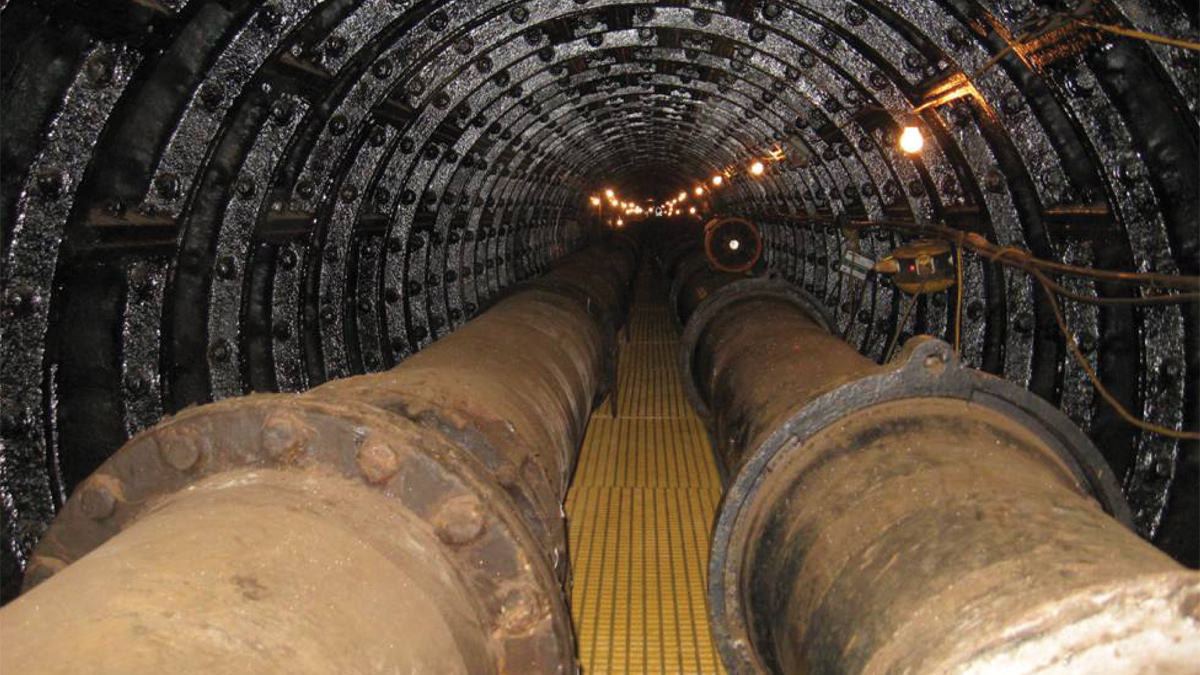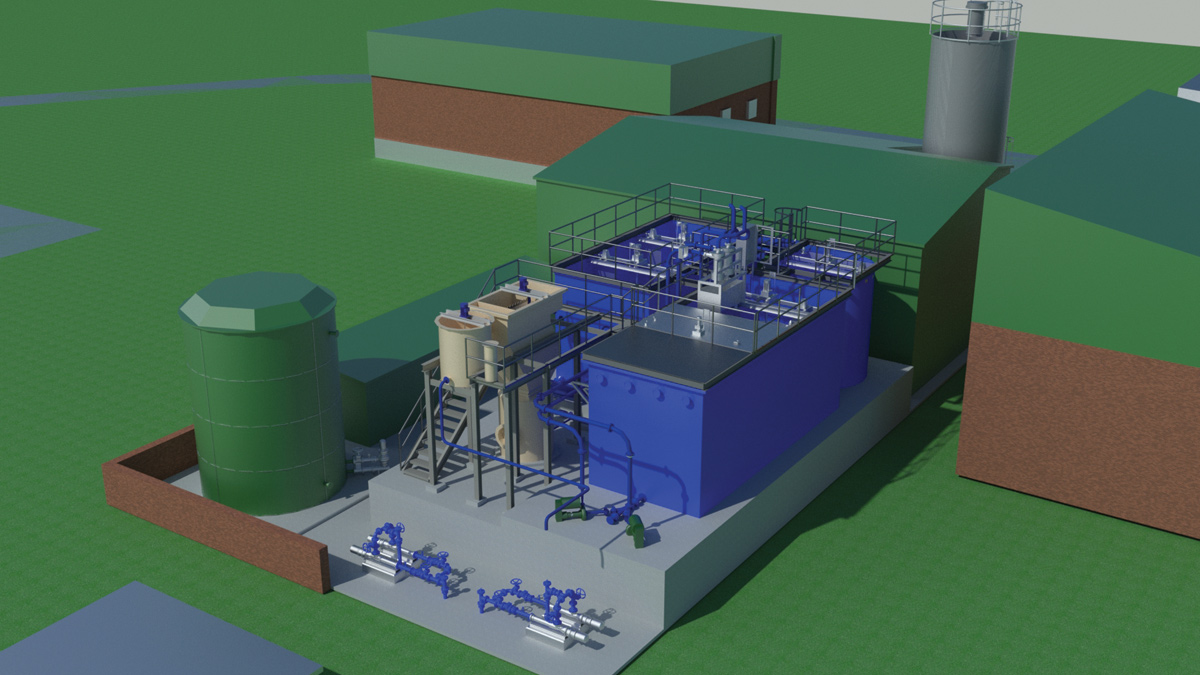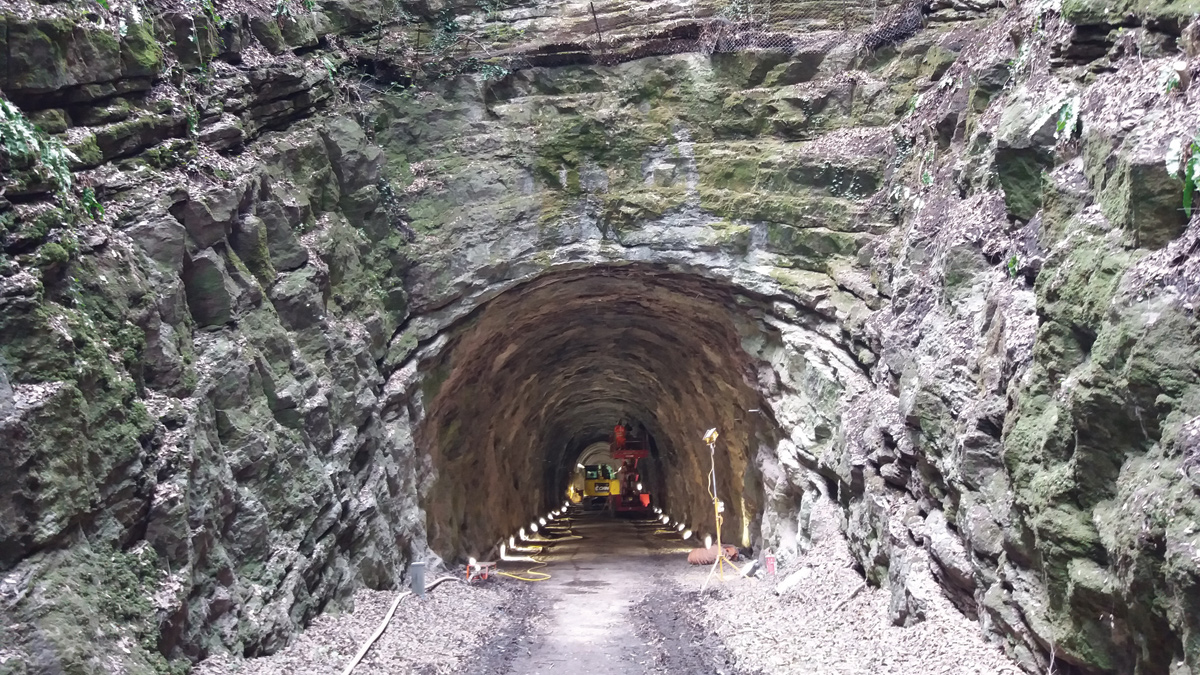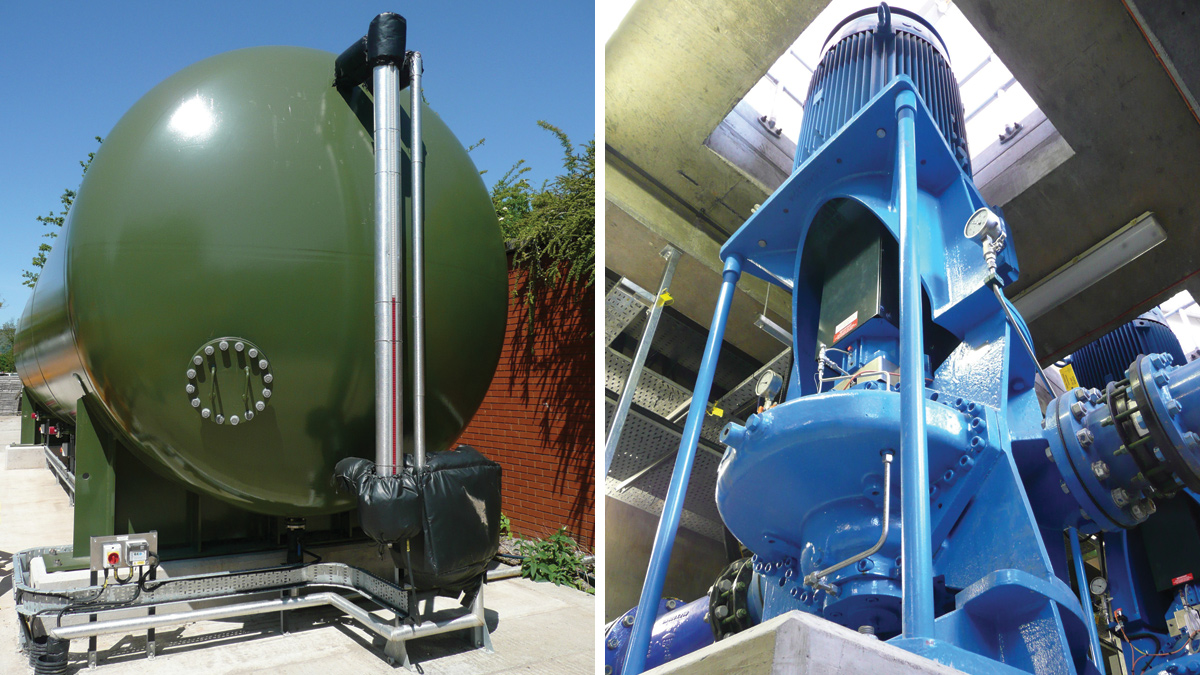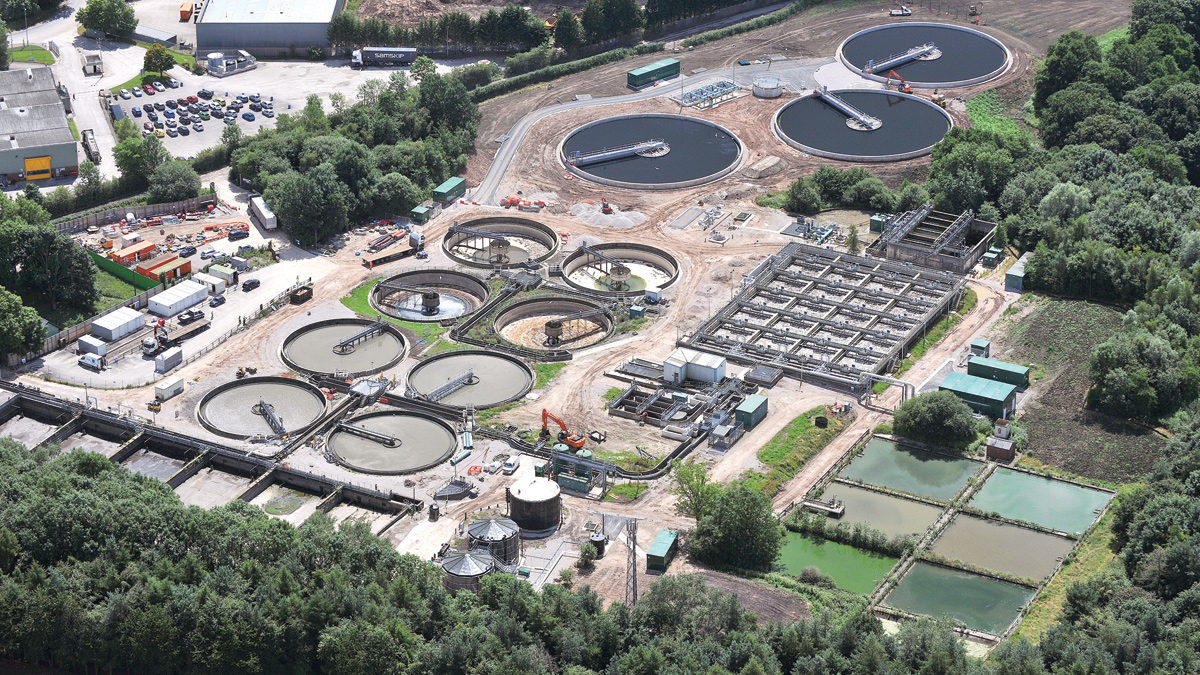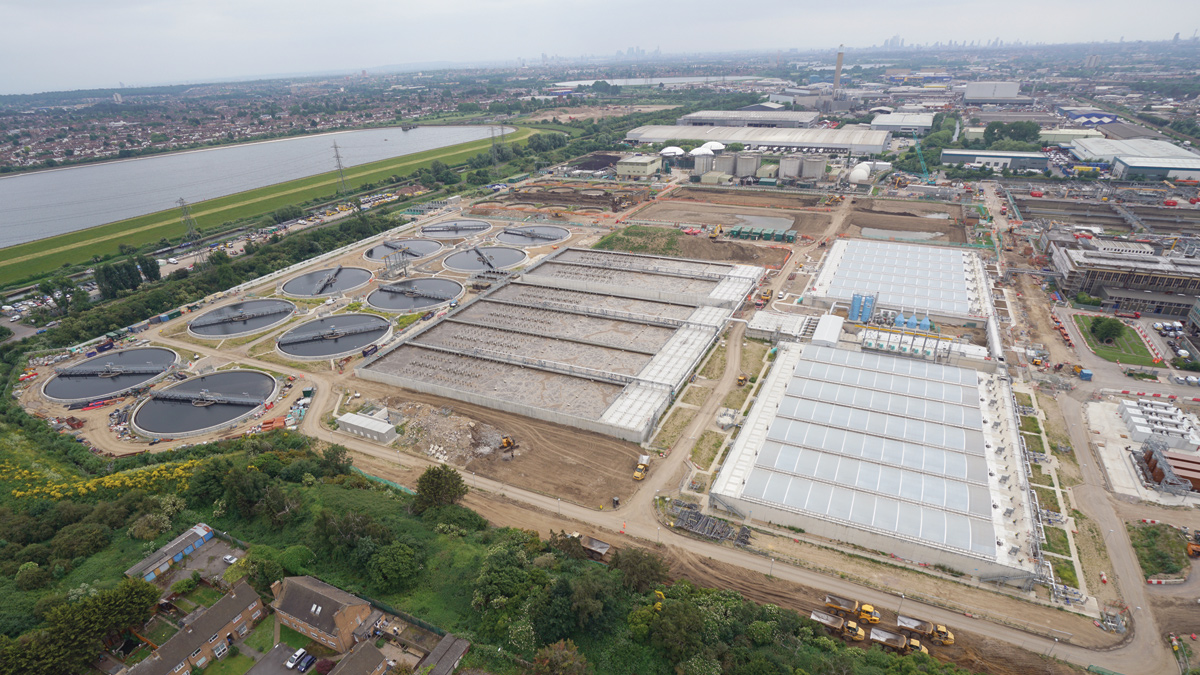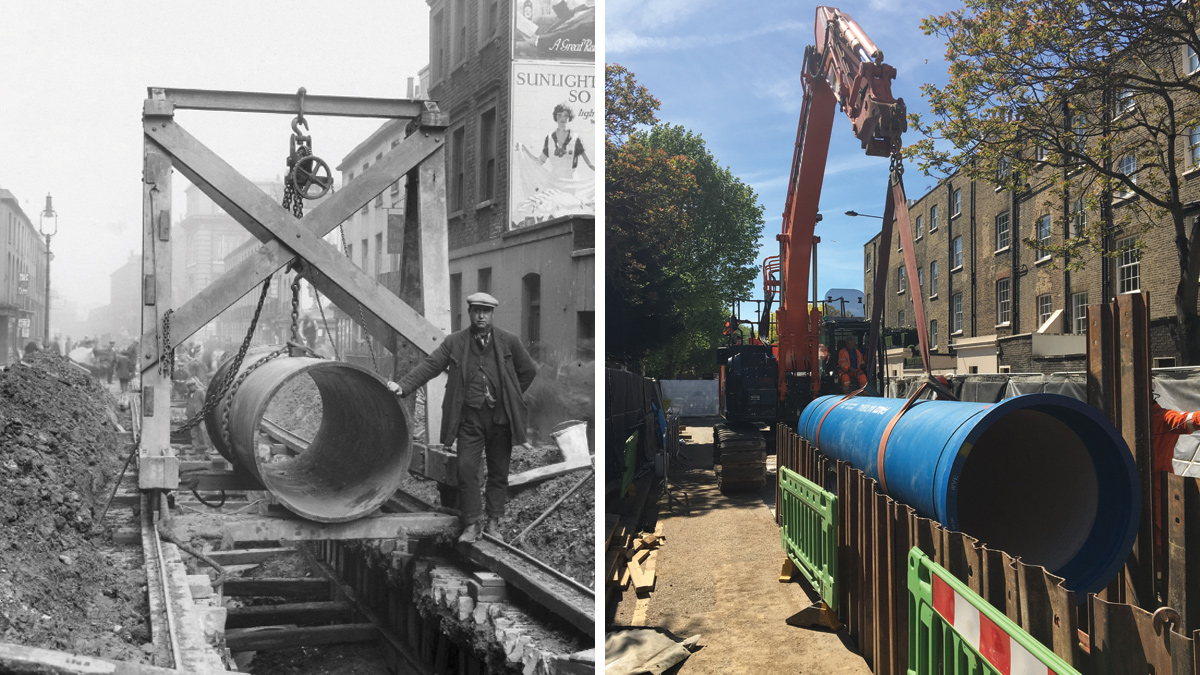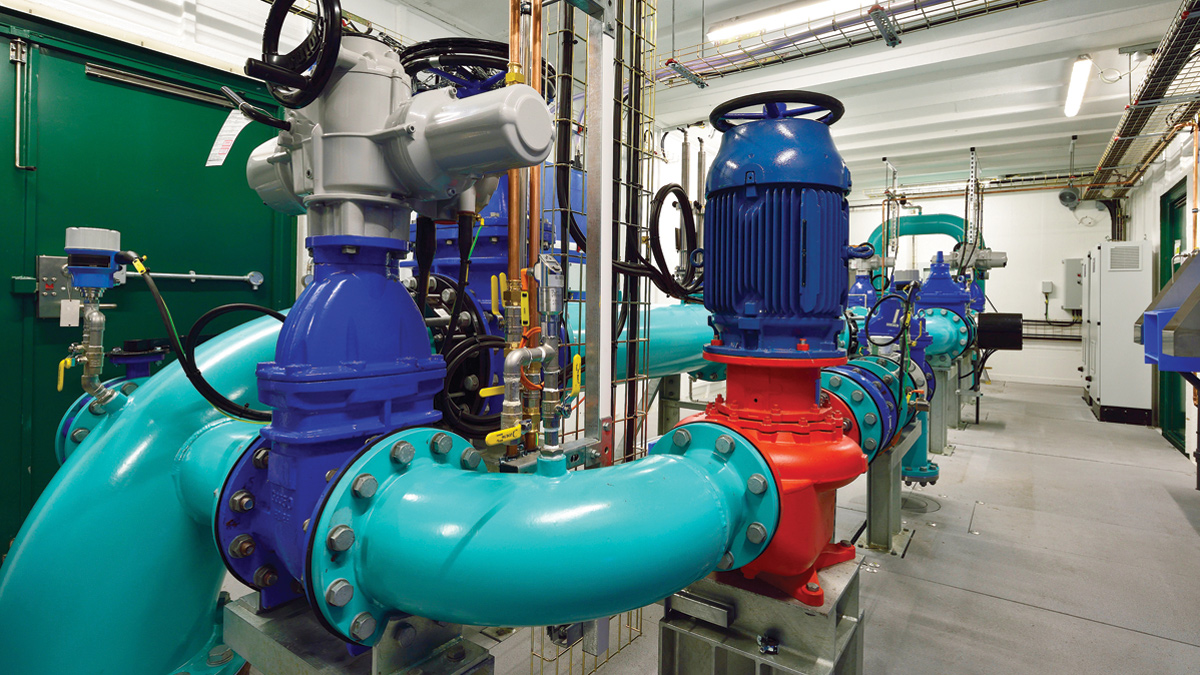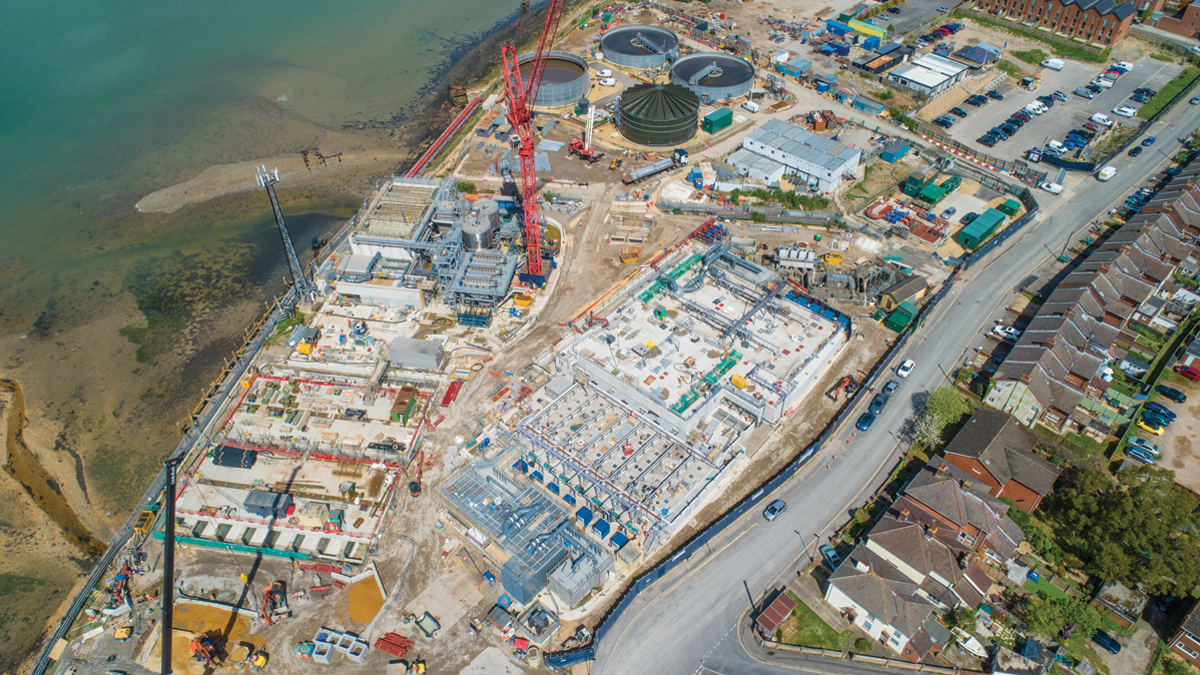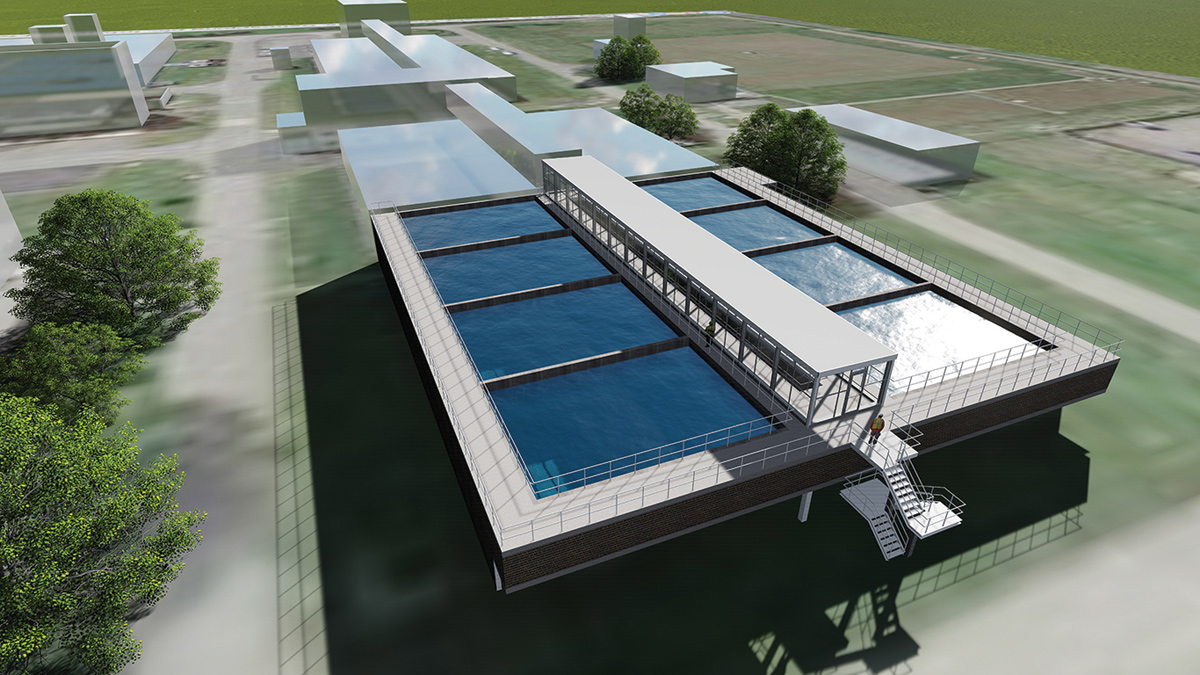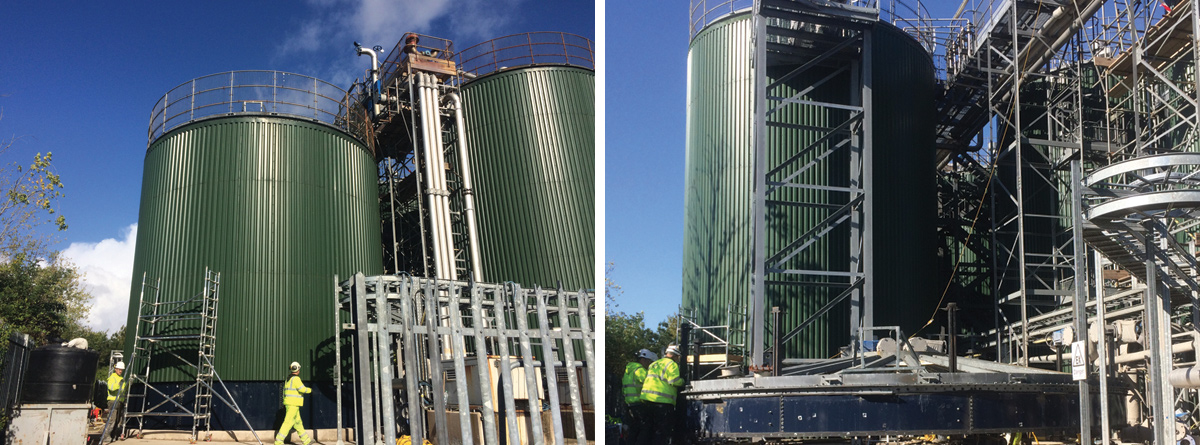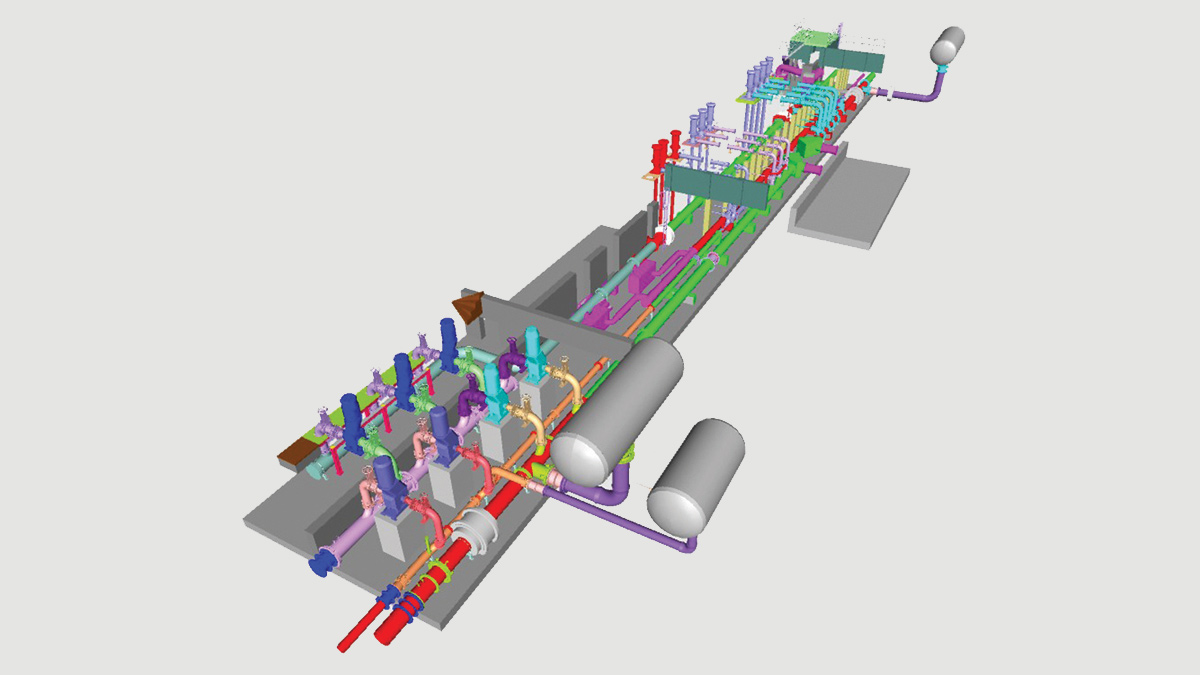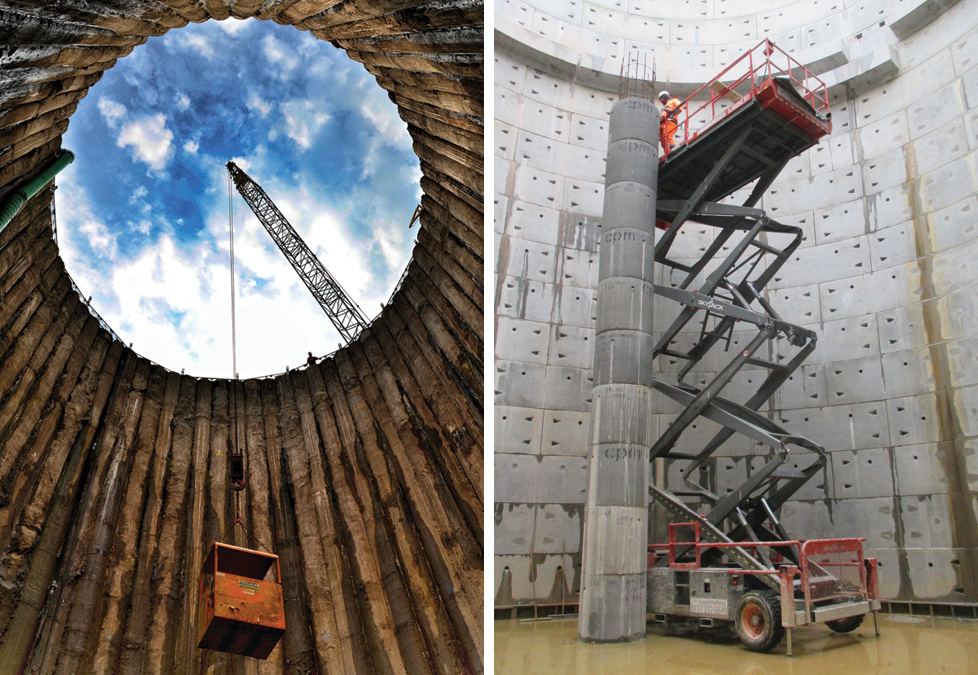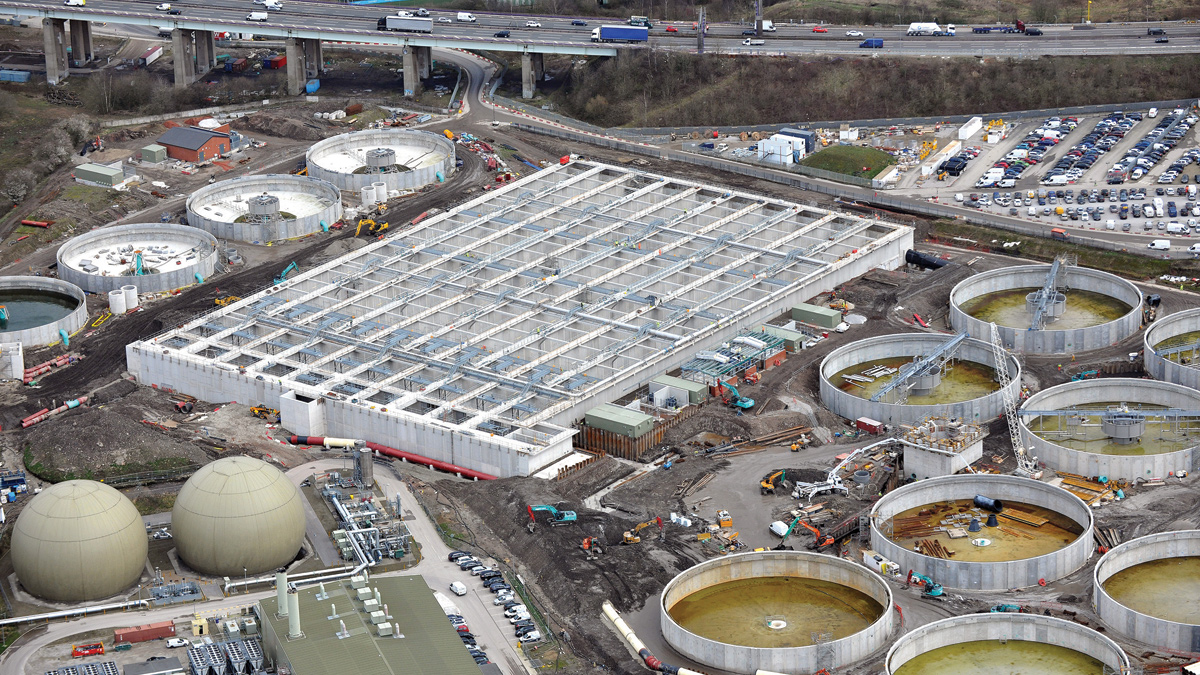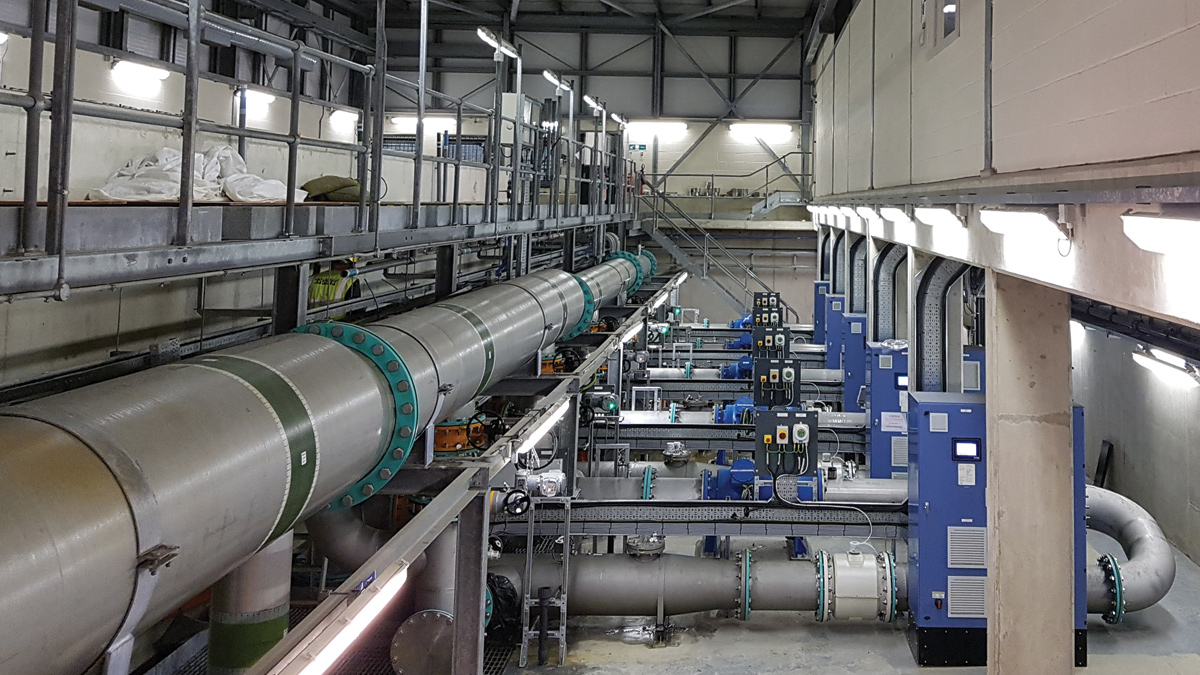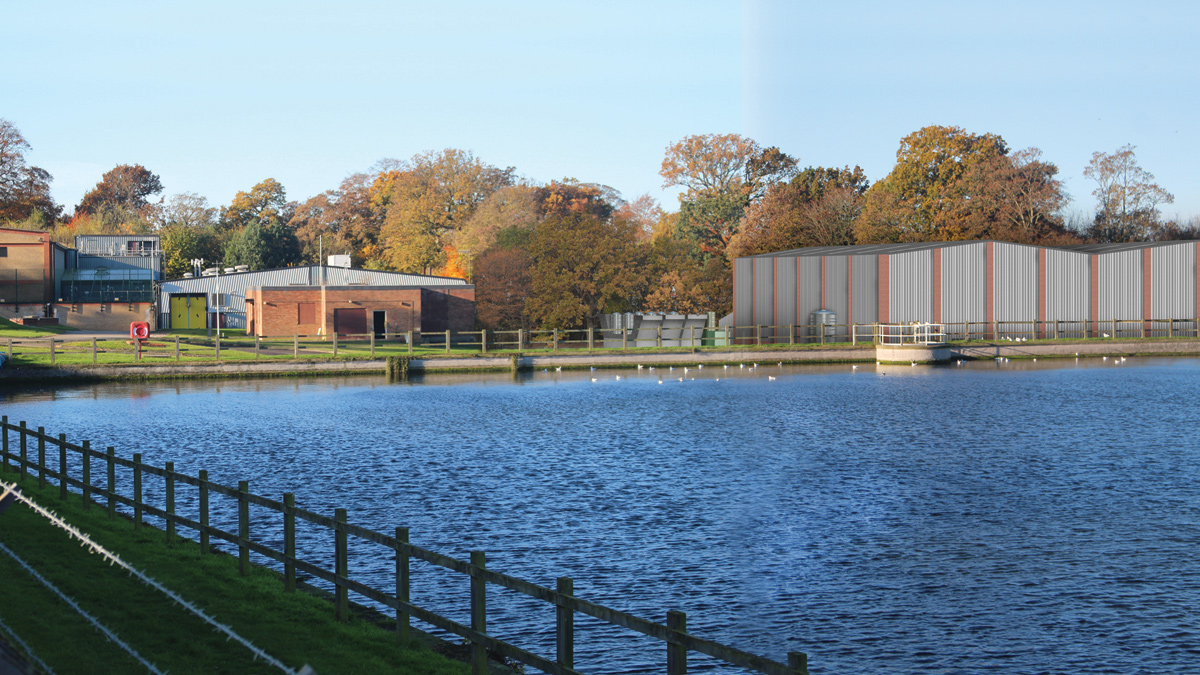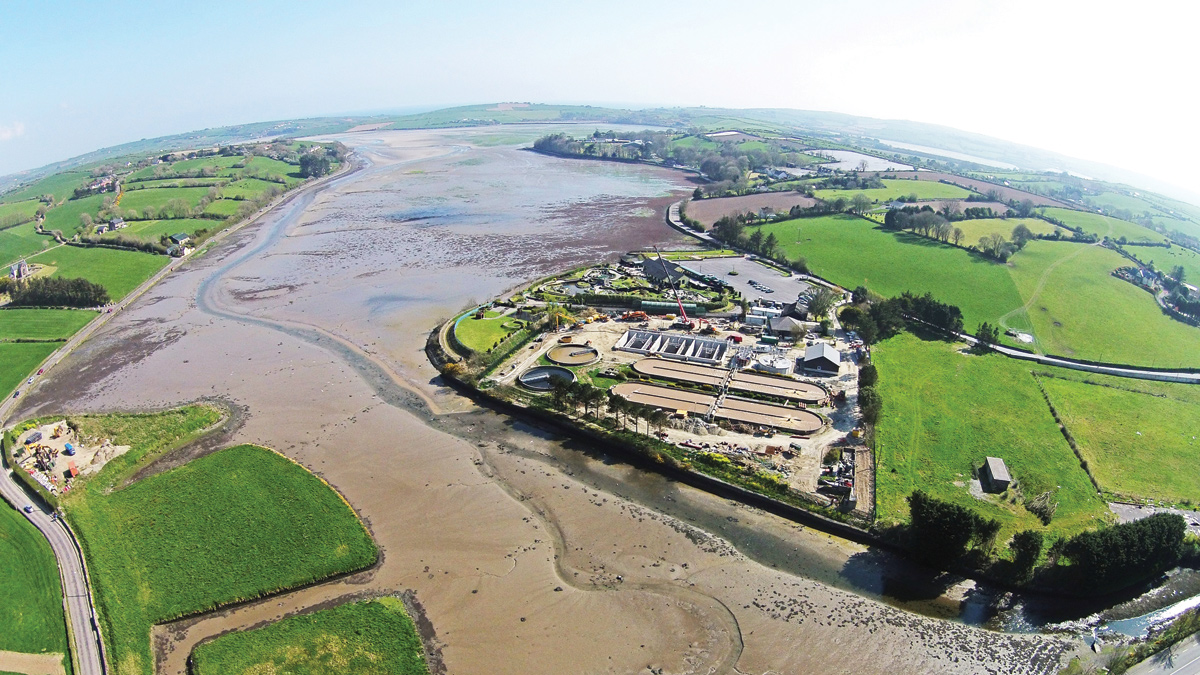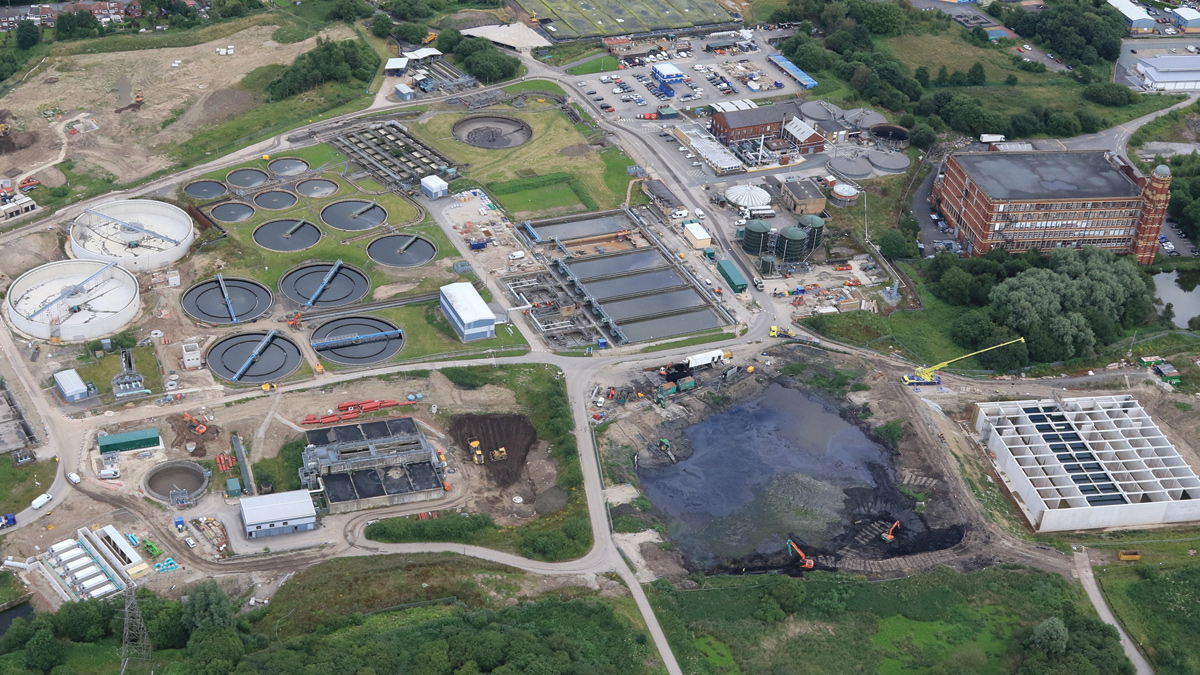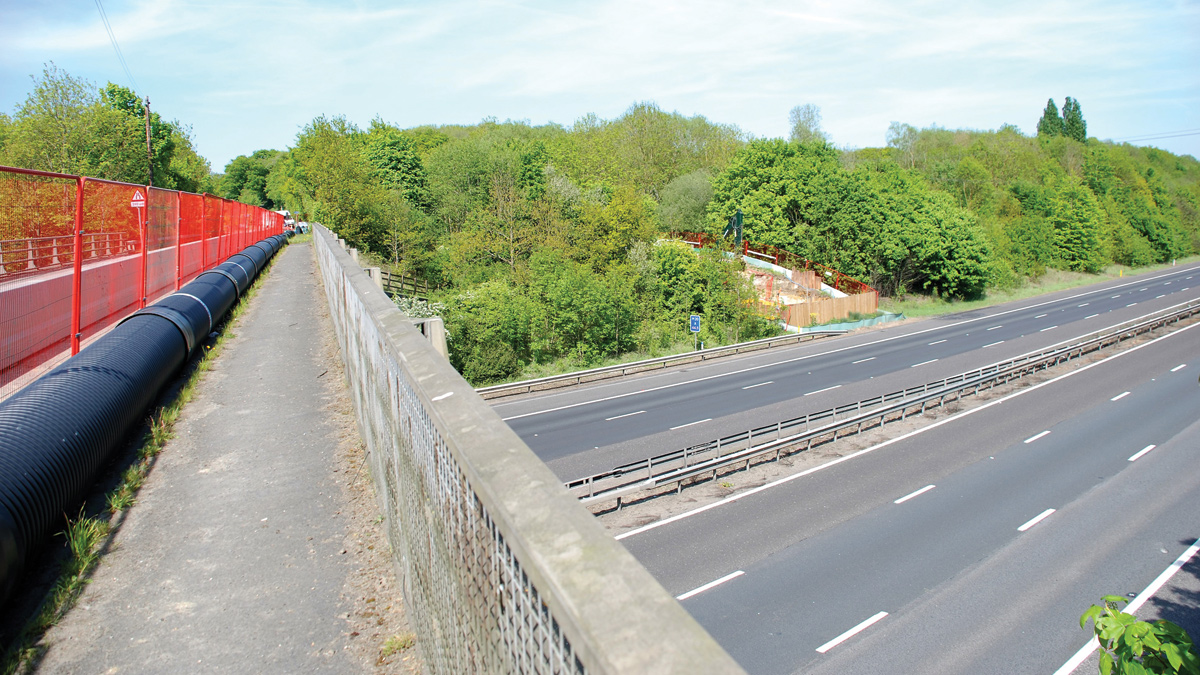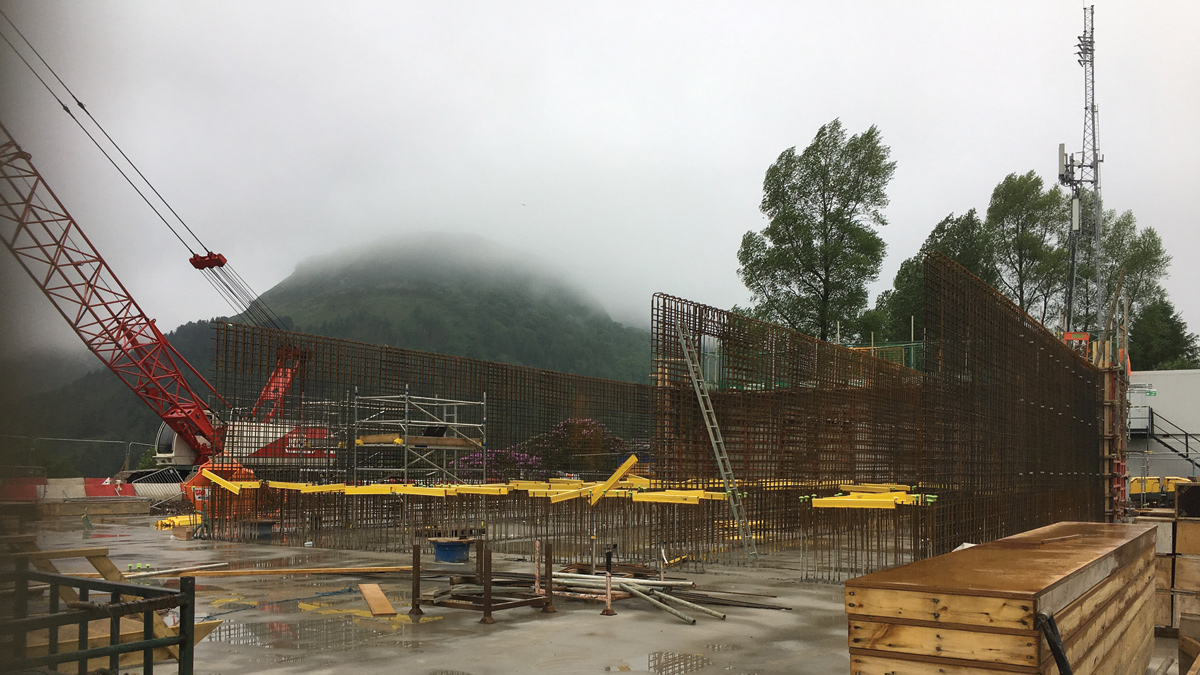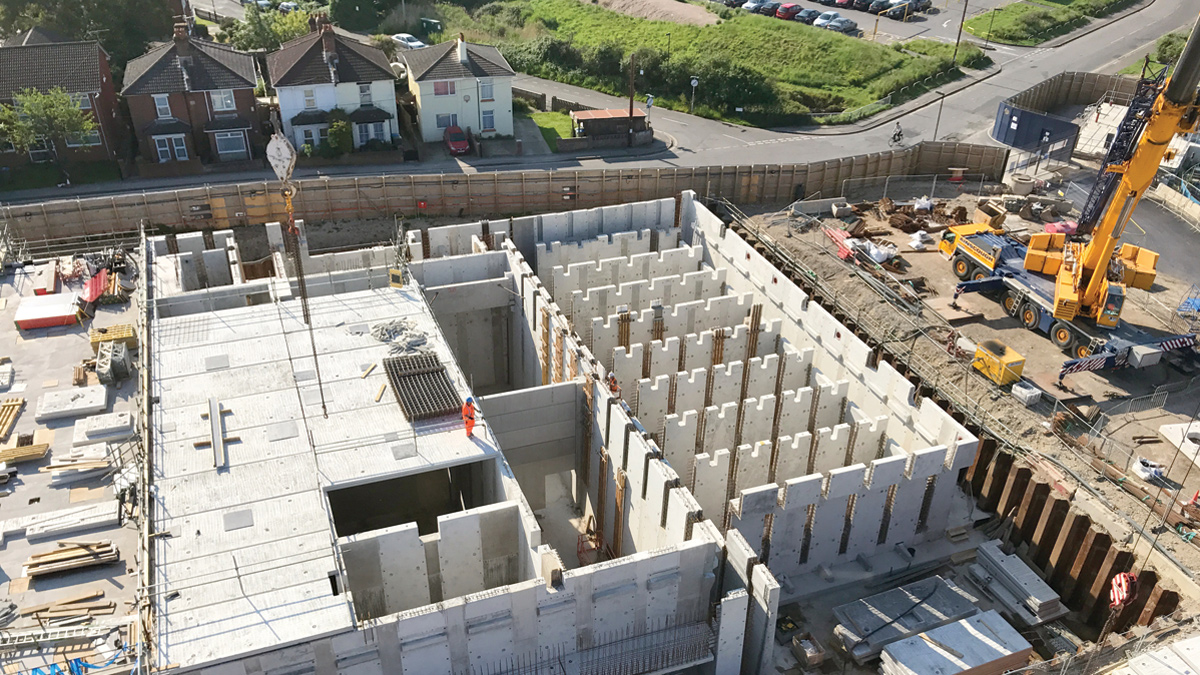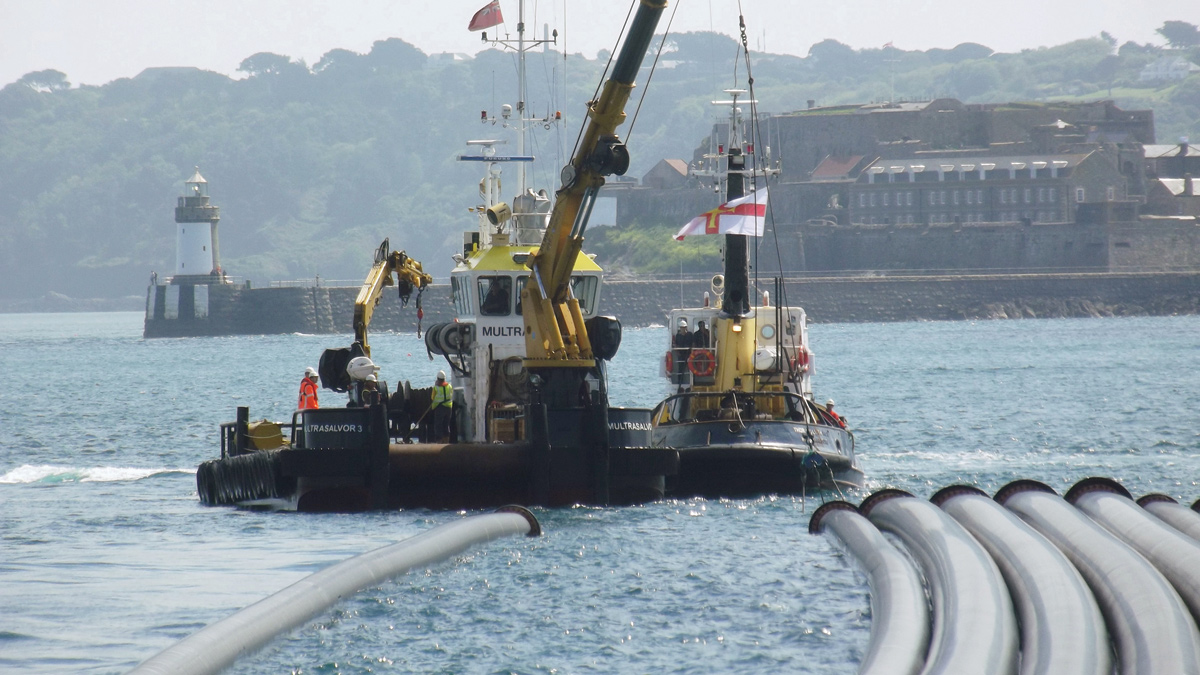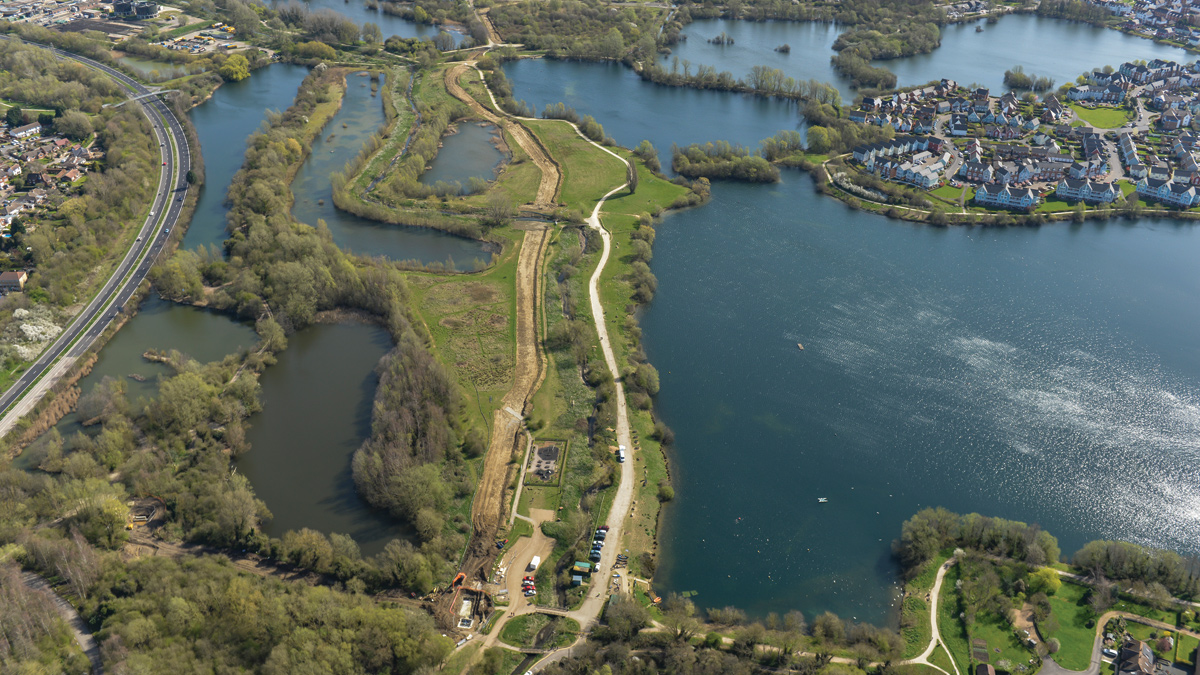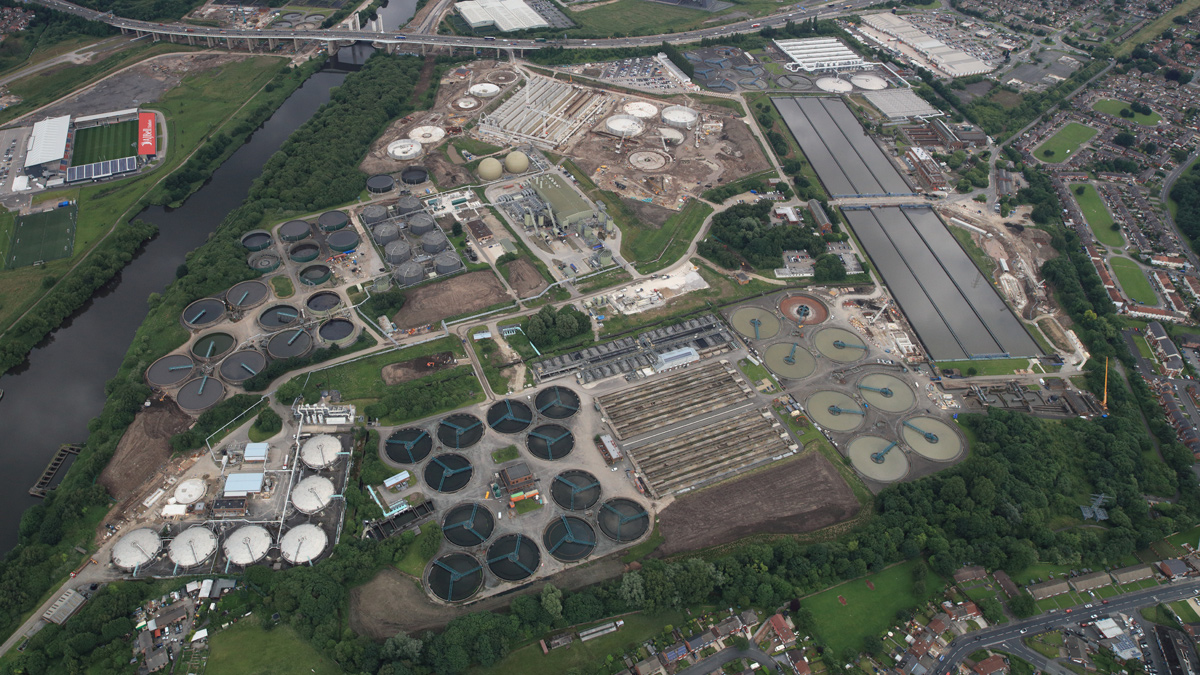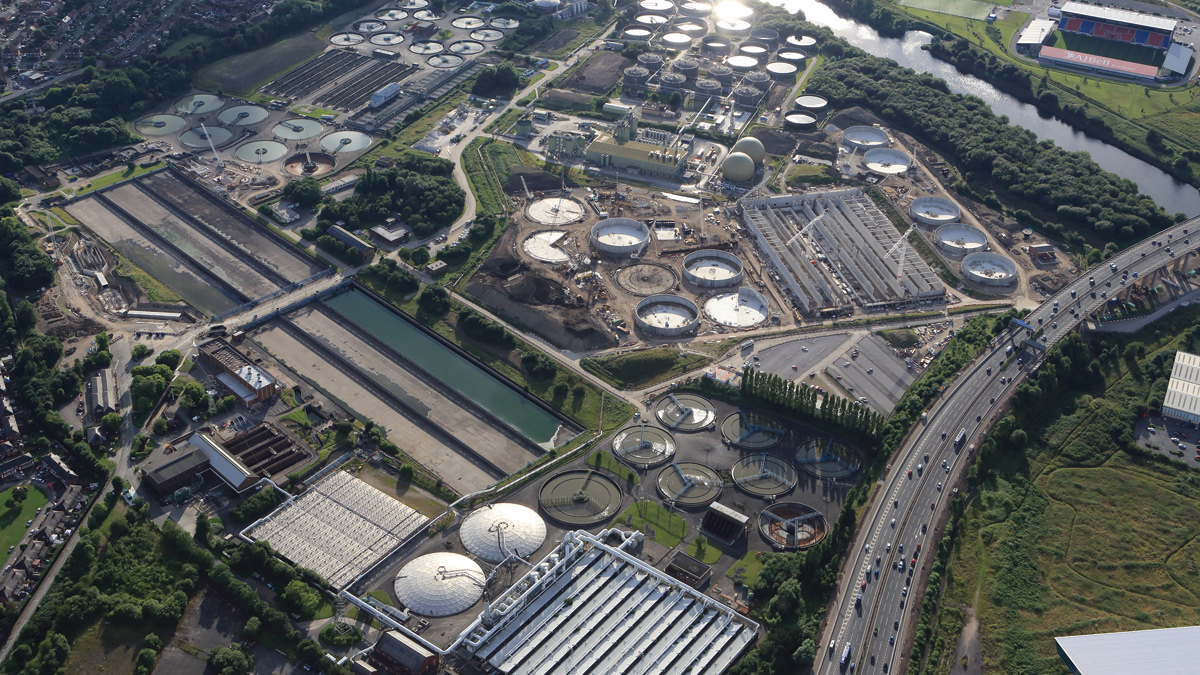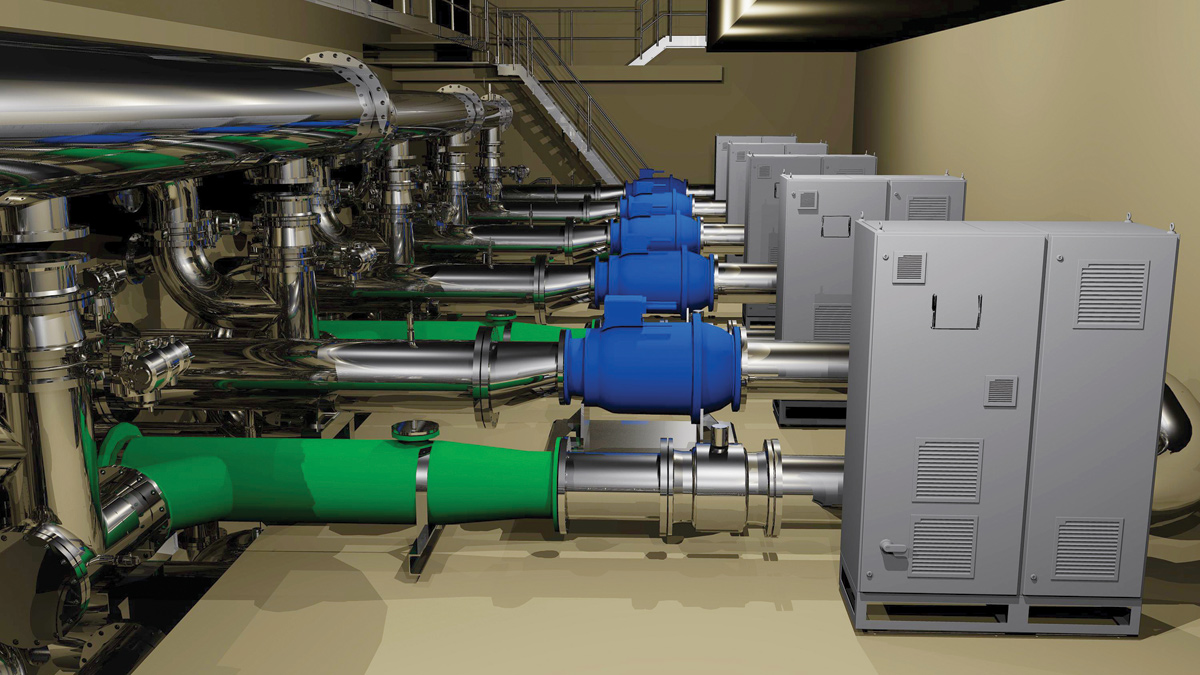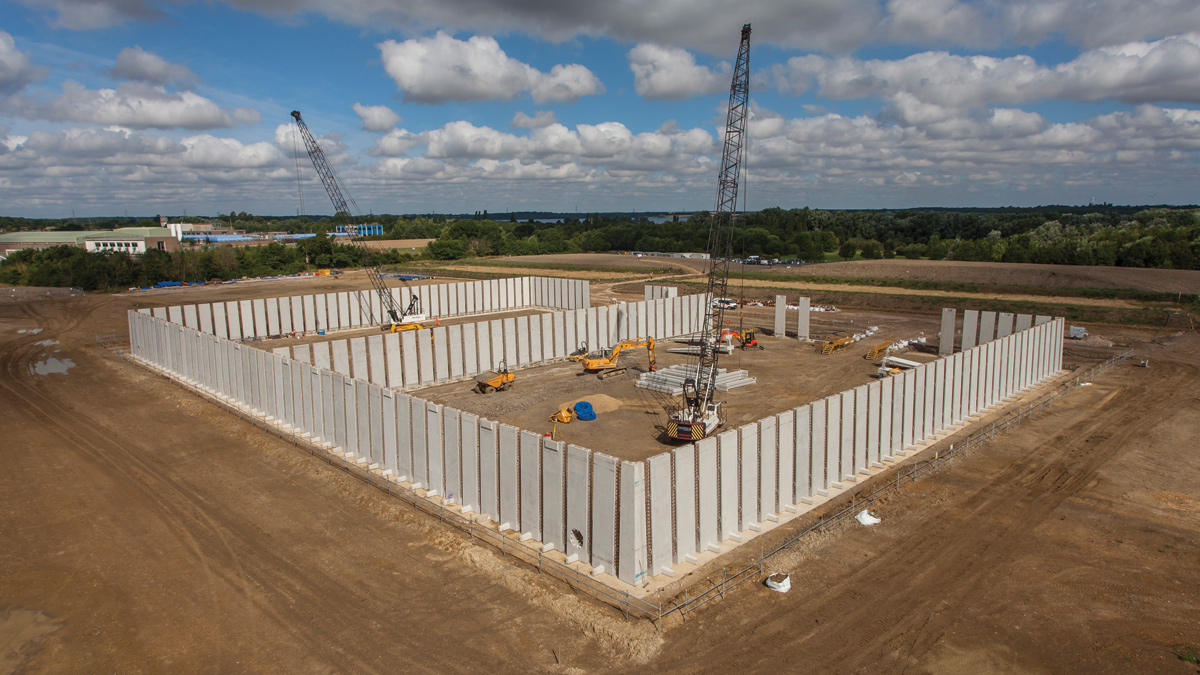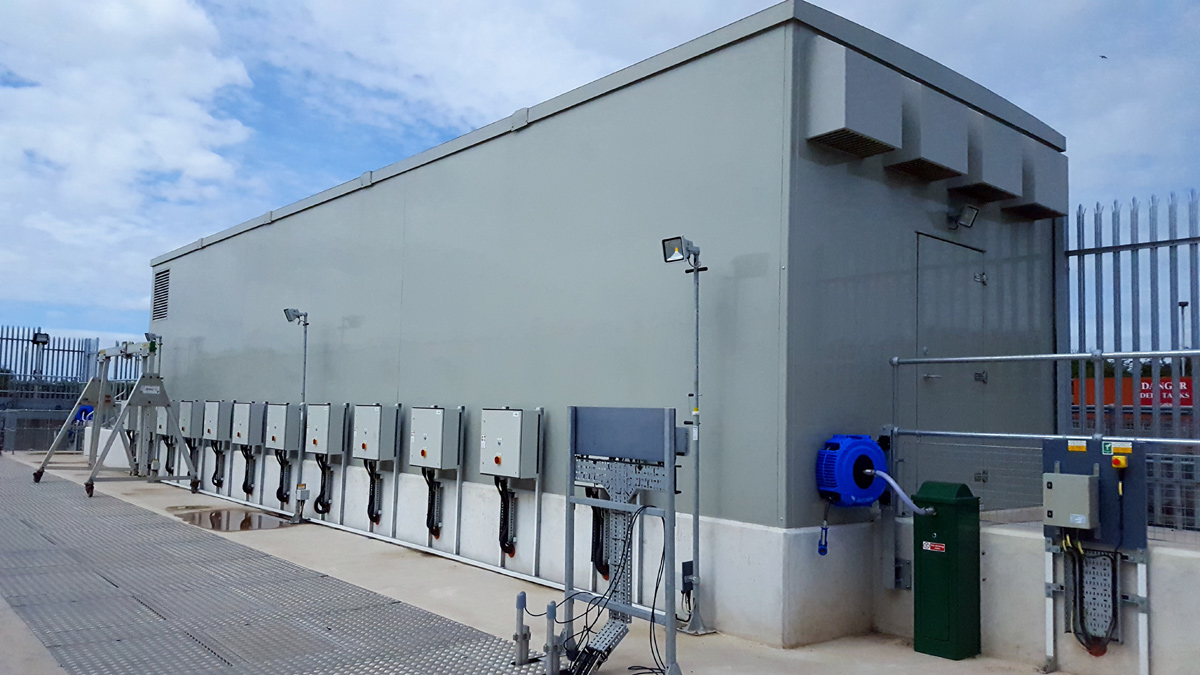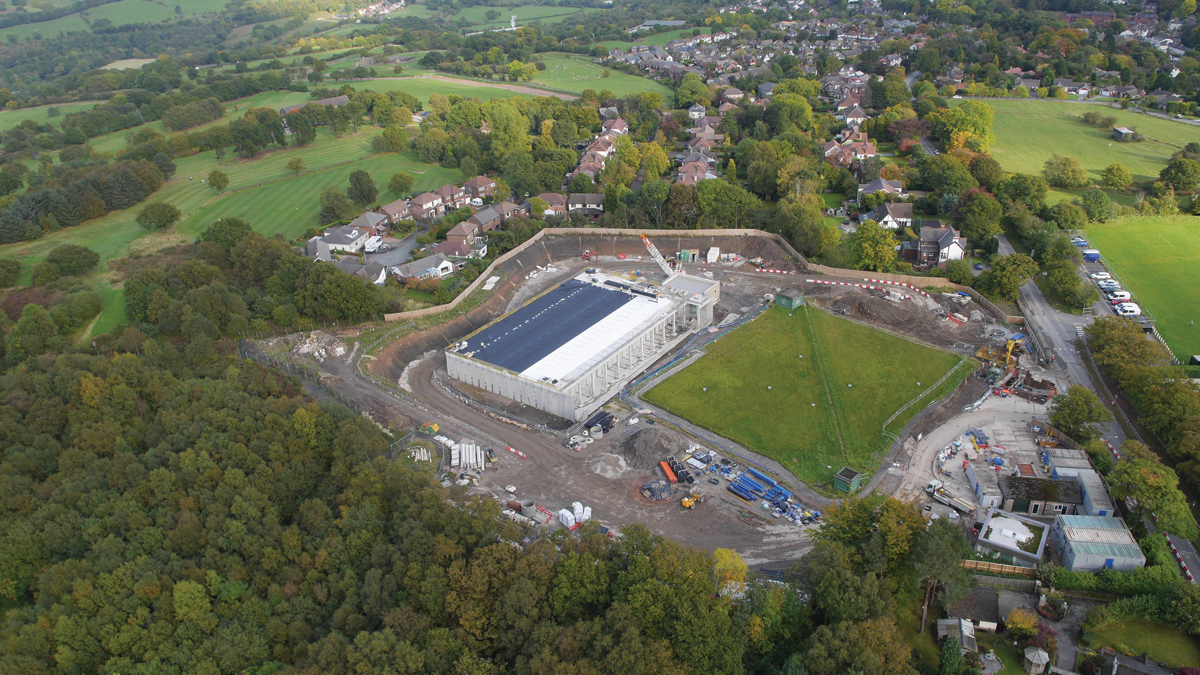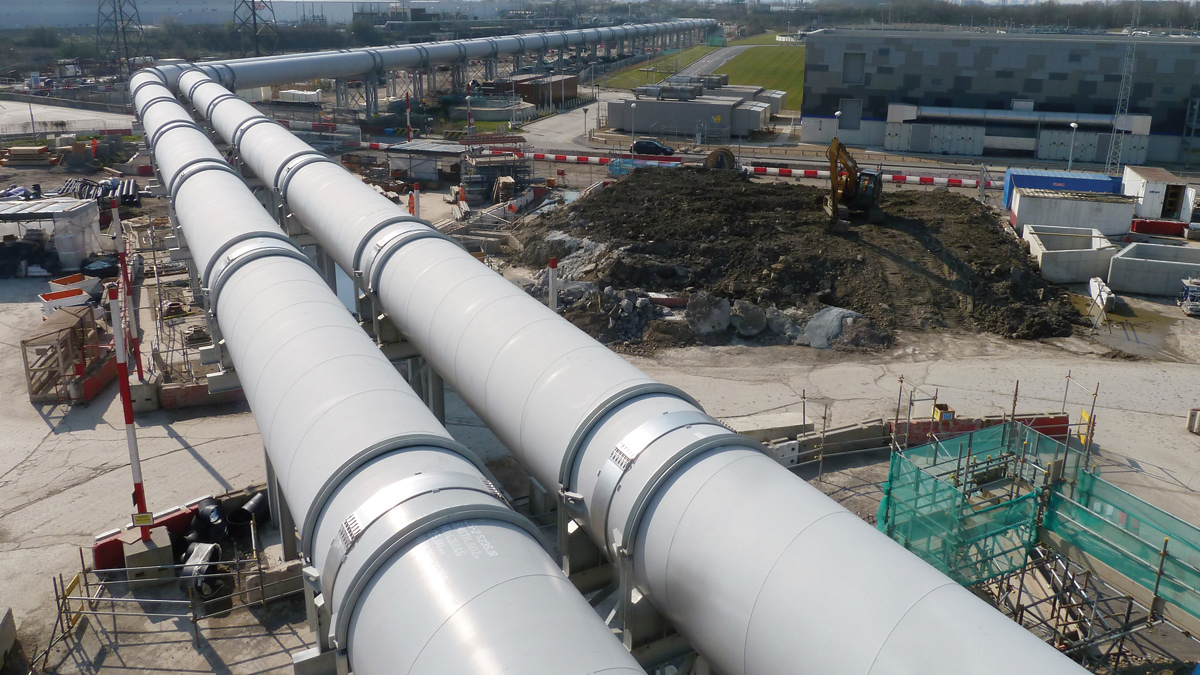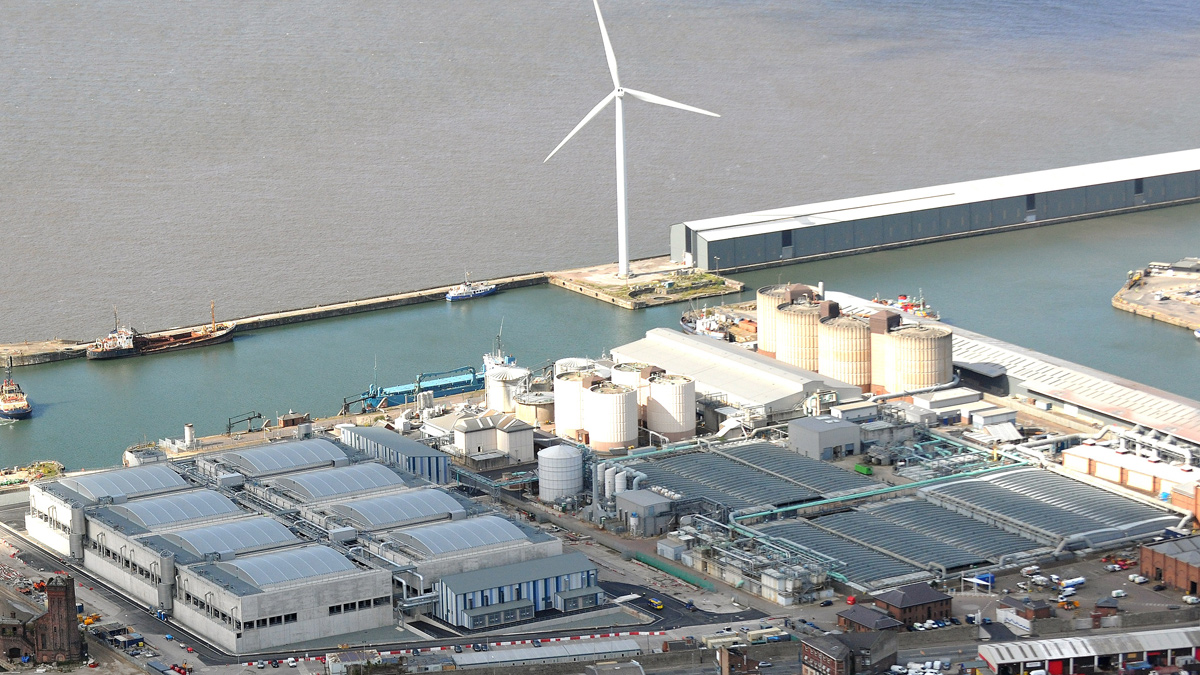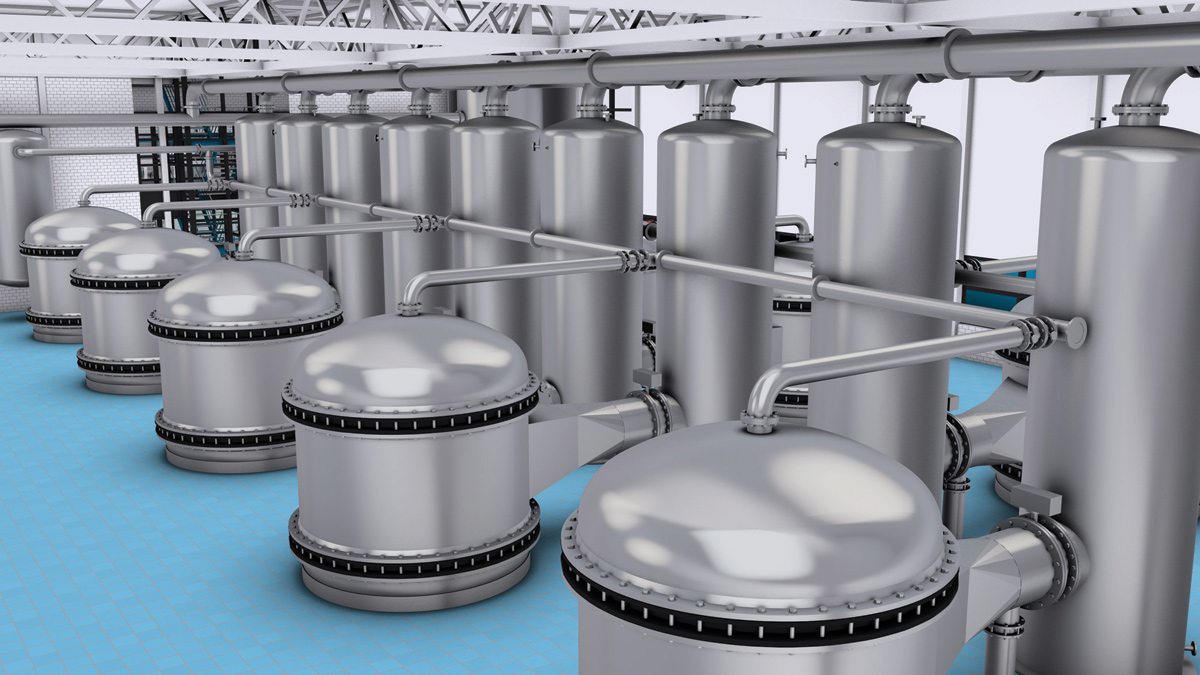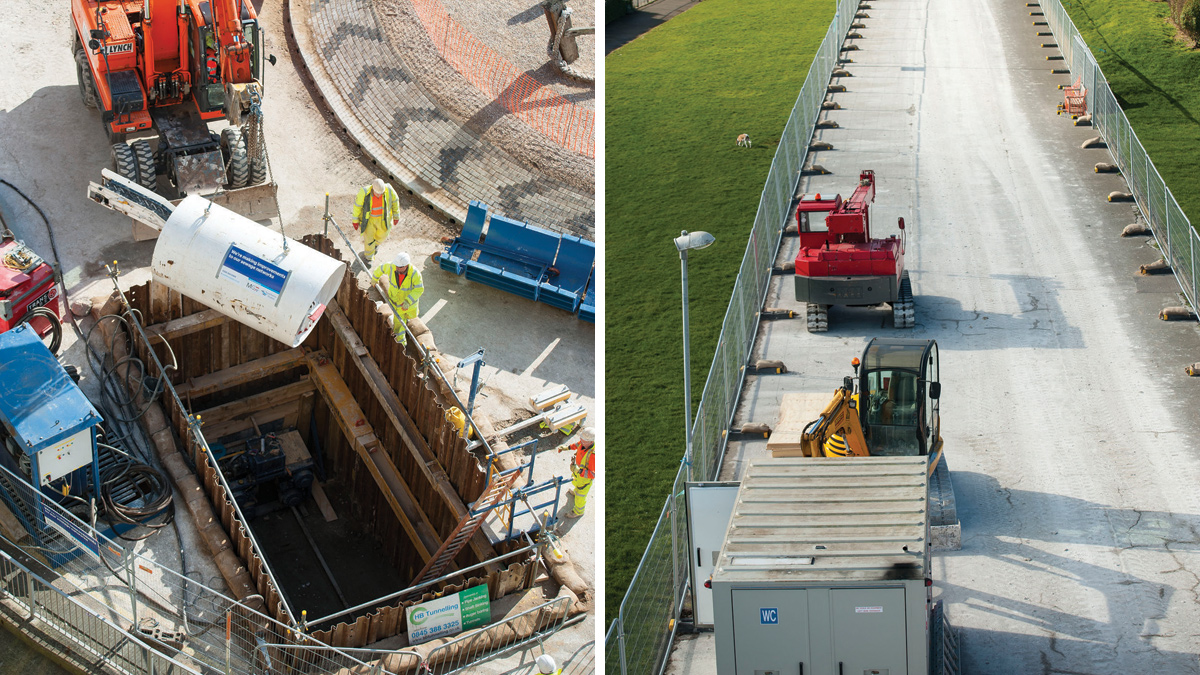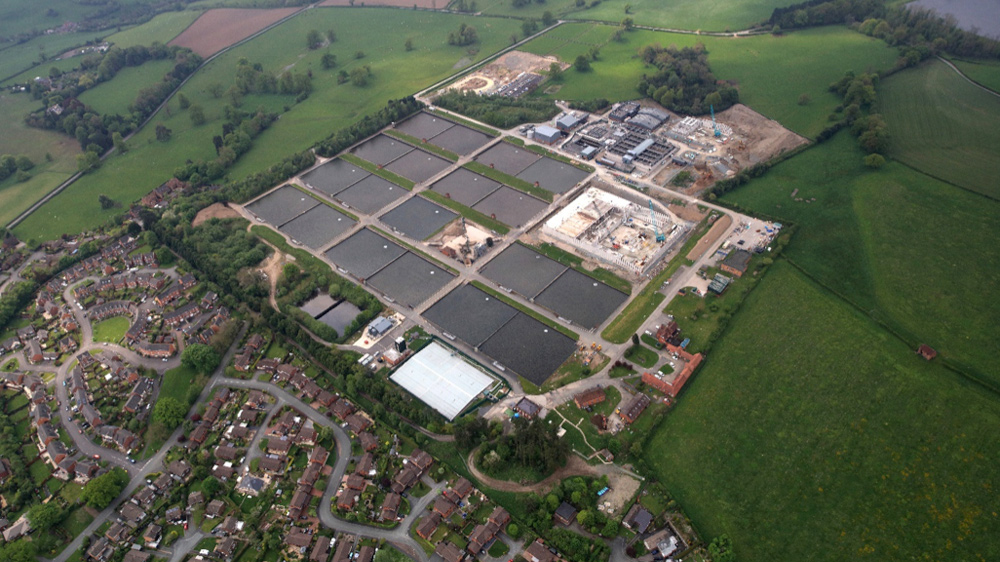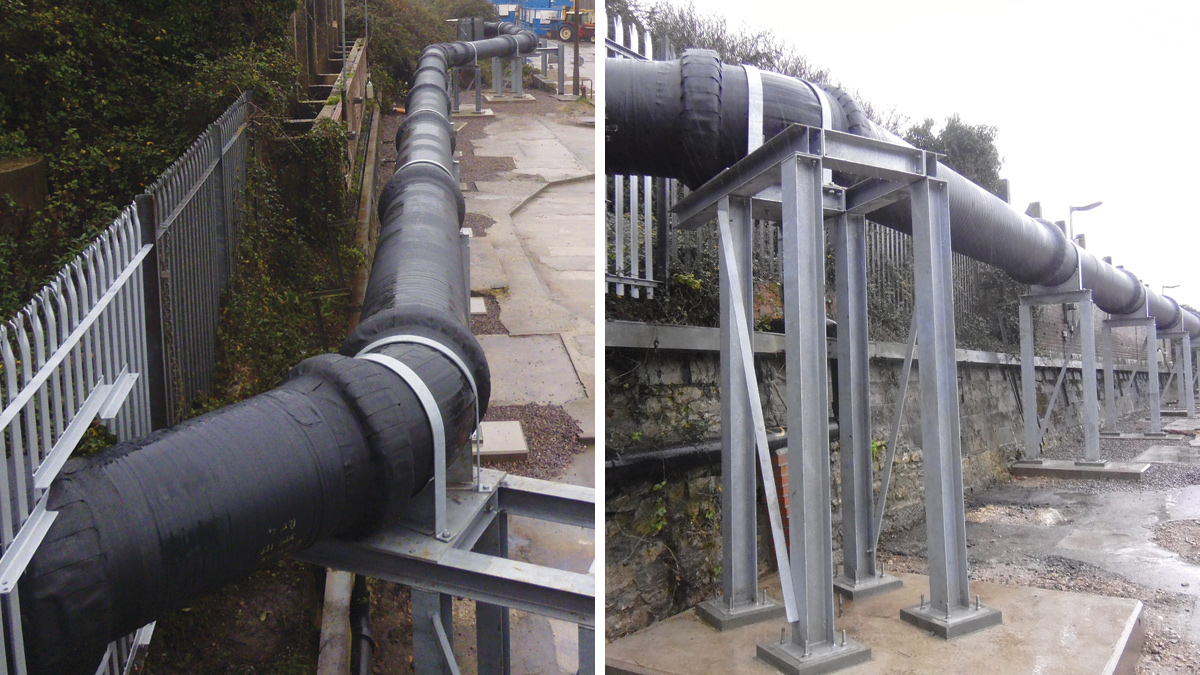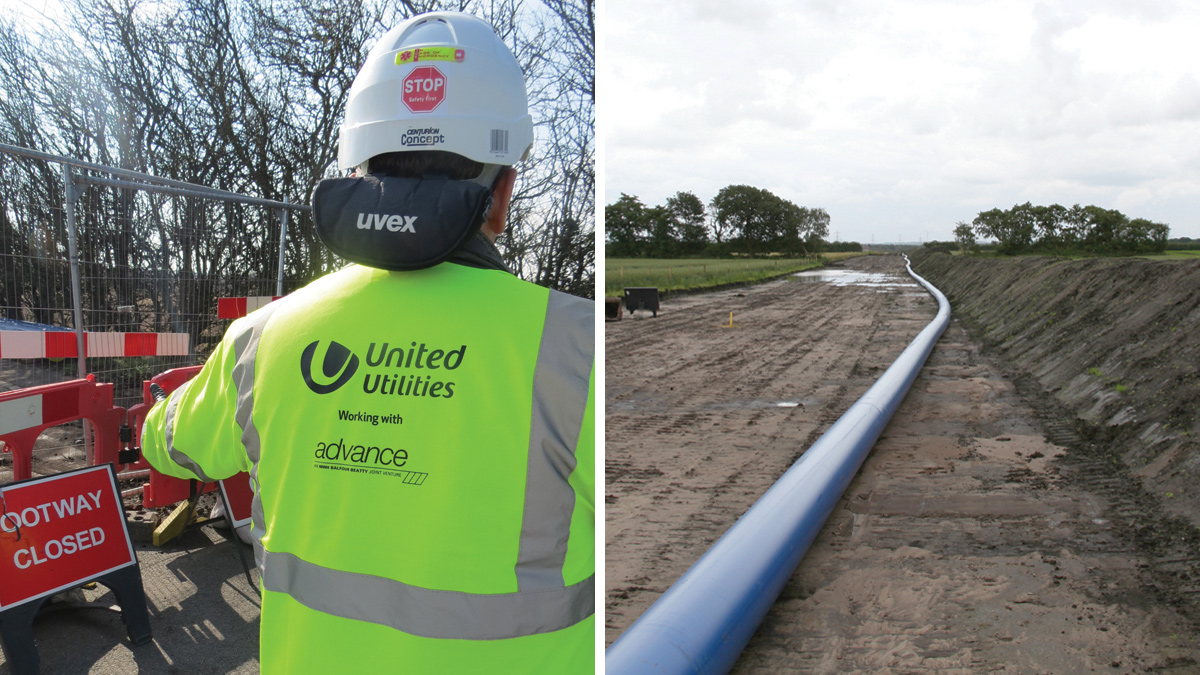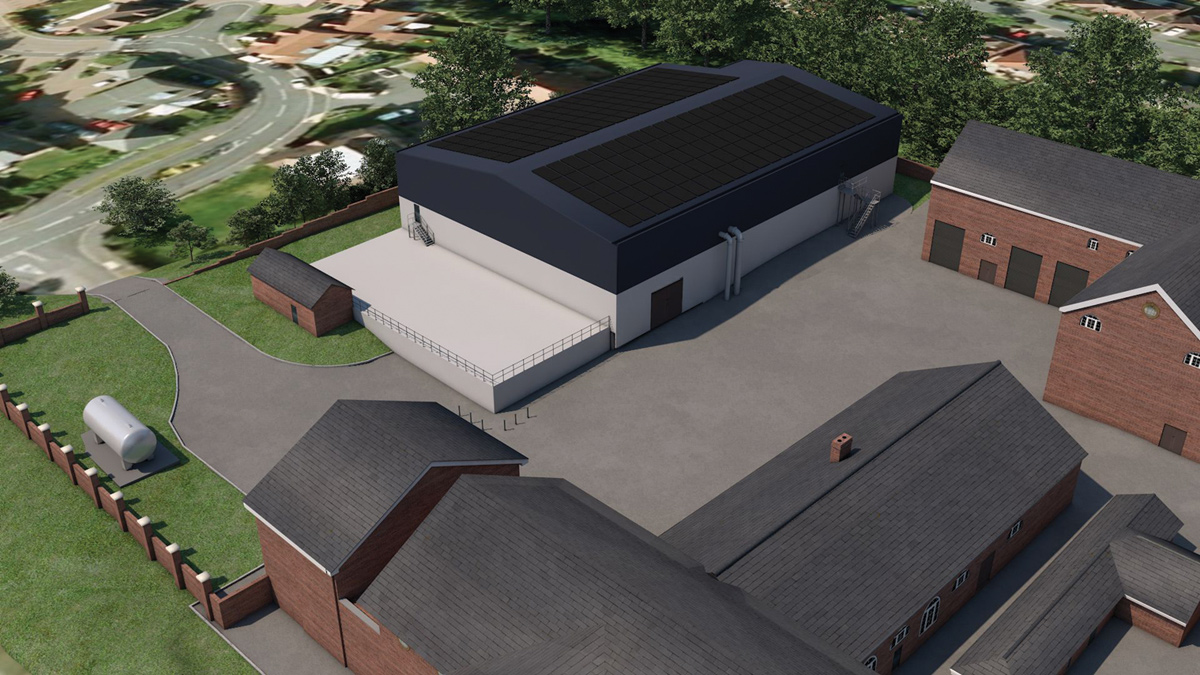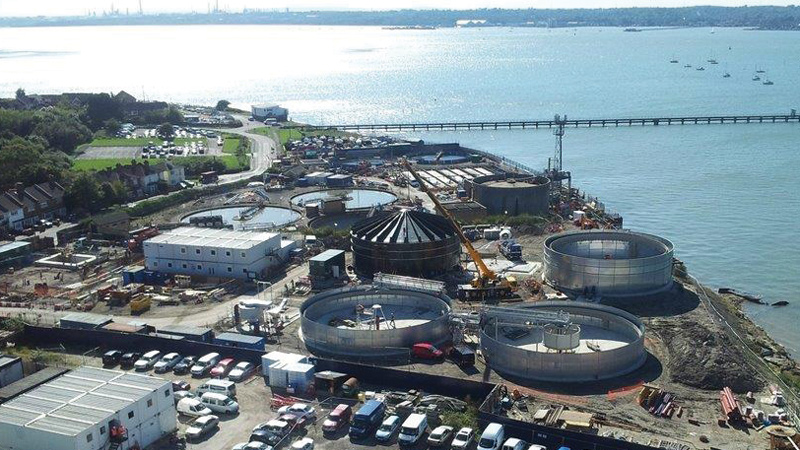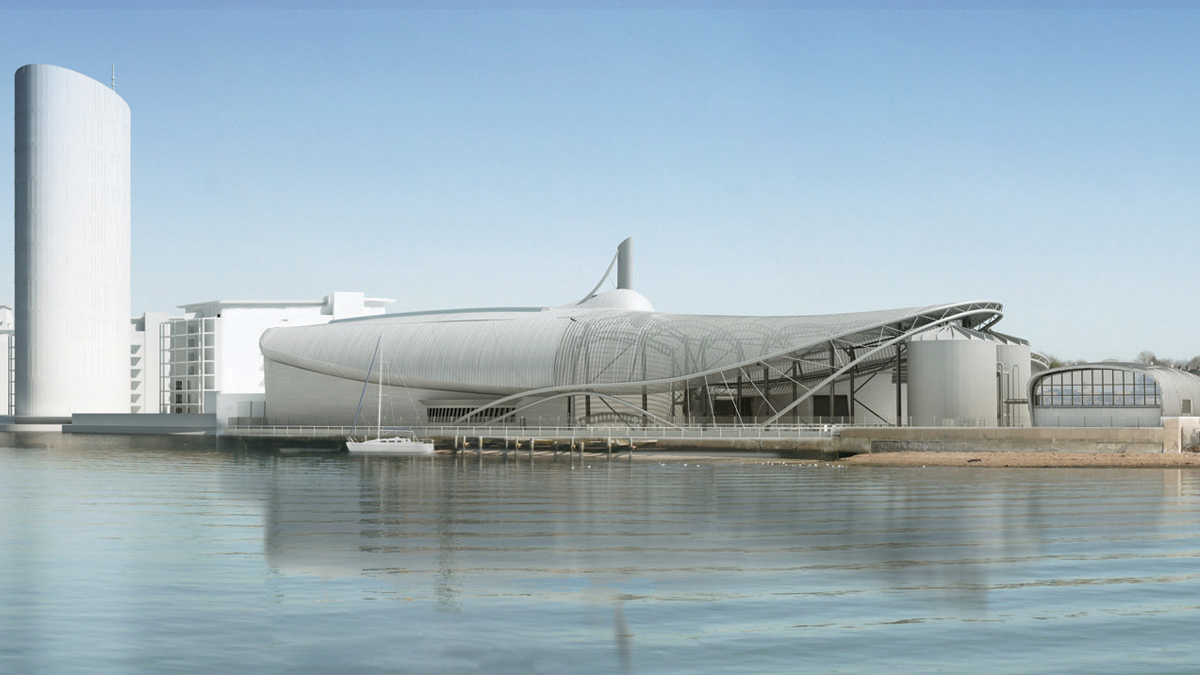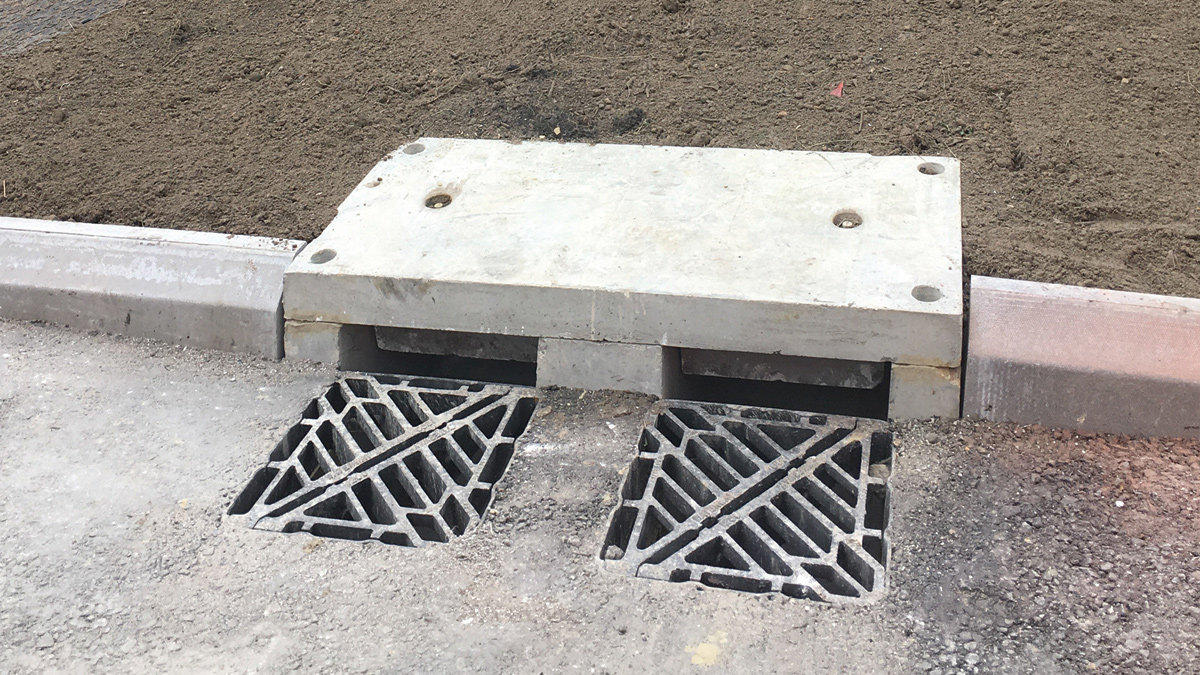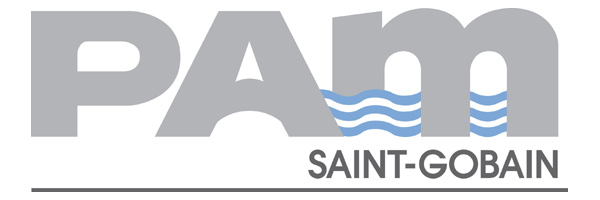Saint Gobain PAM UK
Pipelines in Wastewater Treatment Projects
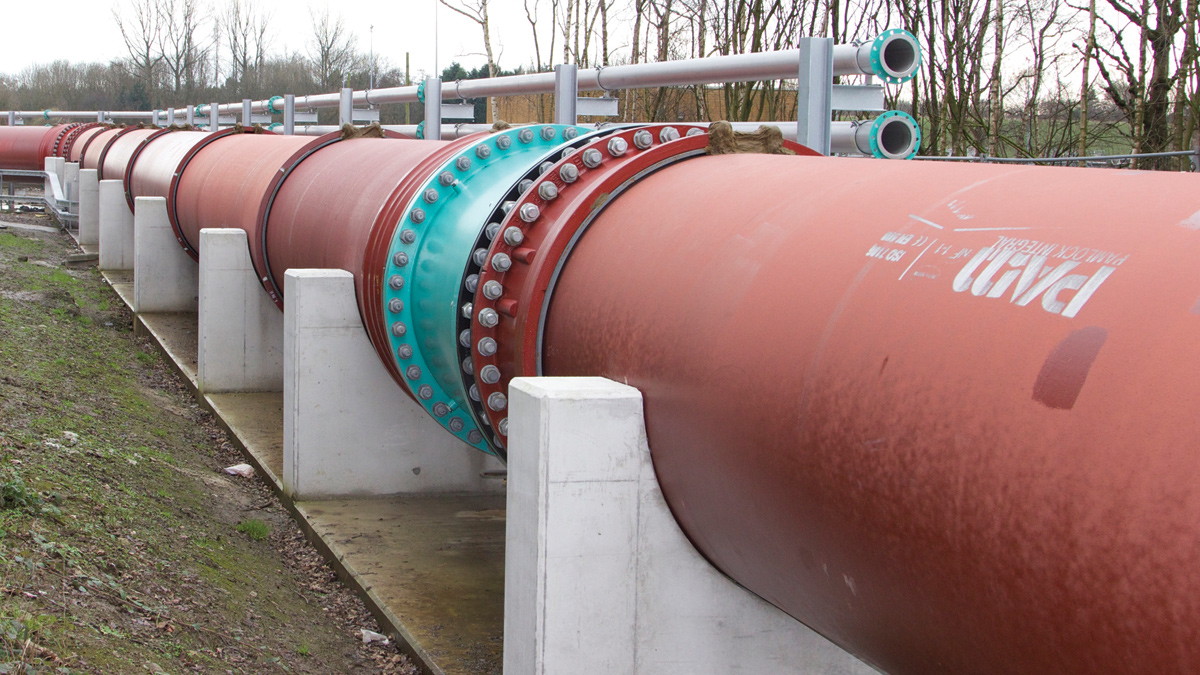
1800mm diameter Pamlock mechanical anchor pipes laid on plinths
Extensions or upgrades to wastewater treatment works by definition are located on the site of existing works. These sites have often been built on, extended or renovated over many decades. All of the challenges a contractor might encounter on a multi-kilometre pipeline are condensed within the boundaries of the works and typically over 50m-100m pipe runs. Contractors find themselves dealing with a ‘perfect storm’ of existing services and buildings, pipelines required above ground on plinths or at extreme depth, contaminated and aggressive soil as well as changes to design as work progresses and unforeseen challenges present themselves. All of this means a far higher level of day-to-day technical support is required from pipeline suppliers than would normally be required. This support, if sought at the early stages of design, can head off issues before they become major problems.
Socket spigot systems
Pipe runs tend to be relatively short and navigate around the services and existing buildings typically found at wastewater treatment sites. Socket spigot systems are ideal for these applications because they offer the flexibility to cut on site to required lengths to adjust the position of fittings and to accommodate design changes.
Most designers specify concrete blocks to provide thrust restraint for socket spigot pipelines. As the pipe diameter increases so does the size and cost of concrete thrust blocks, and this can become a deterrent to specifying socket spigot systems.
Occasionally, flange pipe and fittings are specified as a way of negating the need for thrust blocks but the lack of flexibility of a flange joint in buried applications will almost certainly result in premature failure.
Boltless mechanical anchorage systems such as our Universal and PAMLOCK anchored joints are flexible, simple and quick to install and are a cost-effective alternative to concrete thrust blocks. Since they do not require external bolts to lock the system together there is no requirement for post-installation wrapping to protect the integrity of the bolts.
On a recent project a contractor installing a 1200mm diameter Universal anchorage system took on average 15 minutes to complete the installation of each joint, which is 75% faster than the typical installation time of a traditional bolted anchor system.
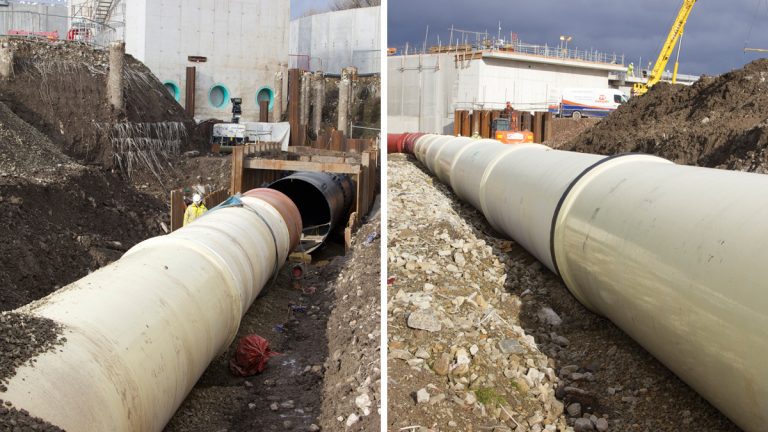
(left) Pamlock PUX coated pipes installed in aggressive soils and (right) Pamlock PUX coated pipes laid between structures
Anchorage systems
There is a further common misconception that anchorage is required at every joint. This is rarely the case. Using Saint Gobain PAM’s Pipespec anchorage calculation tool our technical team can consider all of the parameters relevant to minimise the number of joints requiring anchorage. In many cases water and wastewater is not being transported at high pressures within the confines of a treatment works and the mechanical anchorage required can be minimal. The savings in design and construction costs can be significant as well as negating the disruption to adjacent services and buildings caused when trying to position a large concrete thrust block.
Often, treatment works are built on brownfield sites with relatively aggressive ground conditions. This can be a major issue for contractors and clients requiring assurance of long-term system integrity. The implications for not applying the appropriate level of corrosion protection is unlikely to have an immediate impact on the client, but can result in an expensive and highly disruptive system failure at some point in the future.
Saint-Gobain PAM UK offer soil surveys and ground investigation reports to enable us to provide bespoke external pipe corrosion protection systems for even the most aggressive ground conditions. Corrosion protection can be localised to the soil conditions at each pipe and any additional protection limited to areas of need rather than across the entire pipeline. Once again, early involvement of our technical team allows decisions to be made on the most appropriate level of corrosion protection to minimise cost whilst providing assurance of long-term pipeline performance.
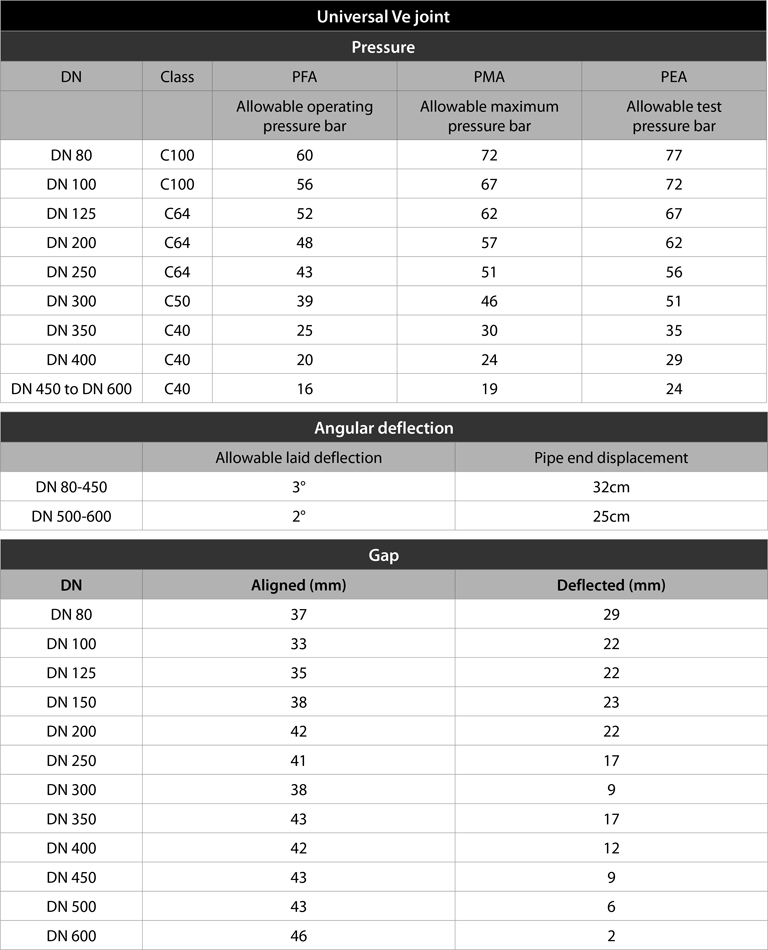
Table 1
Saint-Gobain PAM UK’s Universal Anchorage System
The ANCHORED STANDARD Vi joint is a push-in anchored joint for laying anchoring pipes. The anchoring is designed to take up axial forces and allows laying without the need for concrete blocks. It is suitable for UNIVERSAL STANDARD double chamber socket pipes and smooth spigot ends. Range: DN 80 to 600 (pipes).
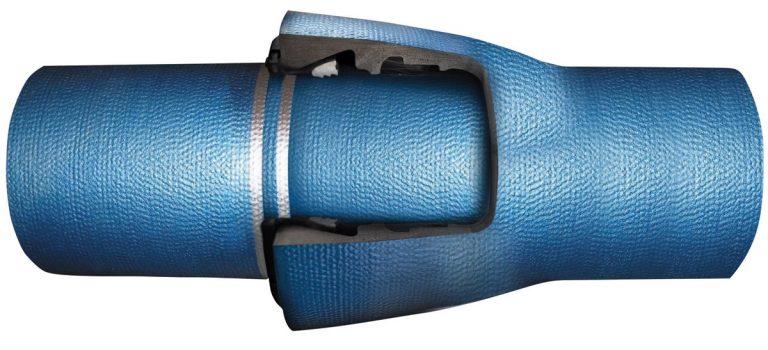
Universal Vi joint
Principle: The basic principle of anchoring joints consists in transmitting the axial forces from one pipeline component to the next, thus ensuring that the joint does not come apart. The inserts in the UNIVERSAL Vi anchoring gasket hook onto the pipe spigot, and thus avoid having to install concrete anchoring blocks.
- This anchoring system also avoids the need for a weld bead on the spigot, and so can be used with all smooth spigot ends and in double-chamber sockets.
- Description: The UNIVERSAL STANDARD Vi joint requires the use of UNIVERSAL STANDARD pipes with double chamber socket. Leak tightness is provided by a STANDARD joint gasket. The axial force transmission takes place through an anchoring ring with inserts embedded in the elastomer. They hook onto the spigot end when the pipe is pressurized, thus ensuring joint anchoring. The UNIVERSAL STANDARD Vi joint is not suitable for pipes in FGL iron (grey iron).
- Range: UNIVERSAL pipes with DN 80 to 600 to be used with UNIVERSAL fittings with similar DN (except DN 350 and 450, use fittings with STANDARD joint and STANDARD Vi anchoring solution).
- Applications: Anchored joints are of particular interest in congested conditions that preclude the construction of concrete anchor blocks, or in poorly cohesive soils.
- Performances: The leak tightness of these joints relies on the proven qualities of push-in joints.
- Disassembly: The UNIVERSAL STANDARD Vi joint cannot be disassembled after pressure has been applied.
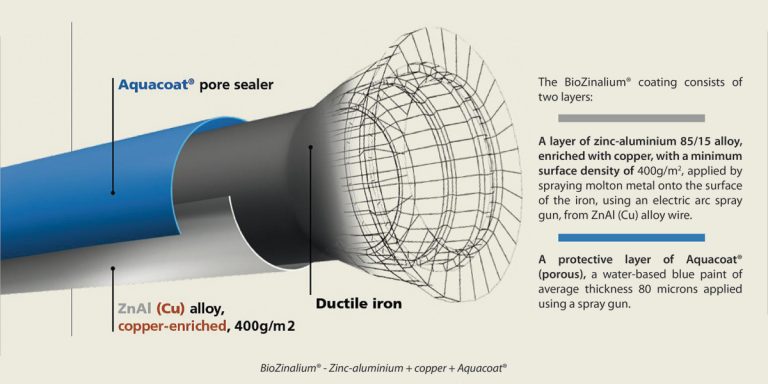
BioZinalium® – Zinc-aluminium + copper + Aquacoat®
![]() Saint-Gobain PAM UK’s PAMLOCK Joint
Saint-Gobain PAM UK’s PAMLOCK Joint
The PAMLOCK (Pk) joint is a STANDARD joint equipped with an anchoring system especially designed for large diameters. The novelty of the system lies in the use of shot particles, which hold the joint together without recourse to bolts.
The anchorage takes up the axial forces and allows concrete anchor blocks to be dispensed with.
Principle: The basic principle of joint anchoring consists of transferring the axial forces from one pipeline component to the next, thus rendering joint separation impossible. Anchored joints allow the axial thrusts arising at particular points (bends, tapers, tees, blank flanges) to be distributed over one or more pipes, thus avoiding construction of concrete anchor blocks.
Description: The seal is provided by a STANDARD joint gasket. The axial forces are transmitted by a mechanical arrangement, independent of the sealing function, comprising:
- A weld bead, applied at works.
- A locking ring, consisting of several segments held together by elastomer connectors.
- A device known as a conformator, which transmits the axial force to the internal socket surface by means of shot filling the annular gap formed by the socket and conformator. The shot behaves like a fluid and ensures:
- Distribution of the axial force on the socket surface and conformator.
- Automatic stretching of the main on assembly.
Any subsequent movement of the main during testing is consequently restricted to residual shot settlement.
- Range: Pipes and fittings: DN 1400 to 1800. For DN 2000, please call.
- Applications: The ANCHORED PAMLOCK joint is of particular interest where congested conditions preclude the construction of anchor blocks, or in poorly cohesive soils.
- Performances: The ANCHORED PAMLOCK joint combines the advantages of flexible joint pipes with welded joint pipes. The leak tightness of the joint relies on the proven qualities of the push-in STANDARD joint.
- Angular deflection:
- − 1° (pipe end displacement 14 cm), DN 1400 to 1600.
- − 0.5° (pipe end displacement 7 cm), DN 1800.
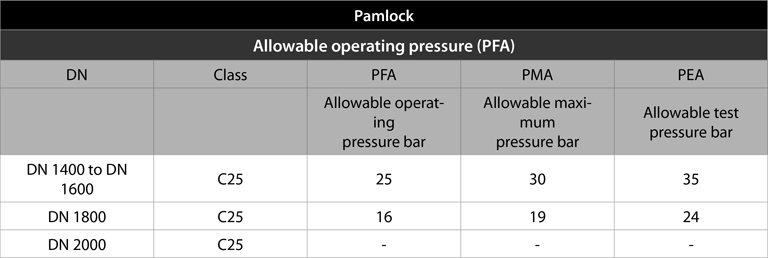
Table 2
Case Study: A major WwTW in the north-west of England
Project Overview: Construction of a new process stream, capable at peak of treating 5,500l/s of raw sewerage coming into the works.
Saint-Gobain PAM UK products used: Pipework diameters from 200mm to 1800mm; range of anchorage systems including Universal and PAMLOCK; a range of external corrosion protection systems; standard coated pipes; TT PUX and PECS coated pipes.
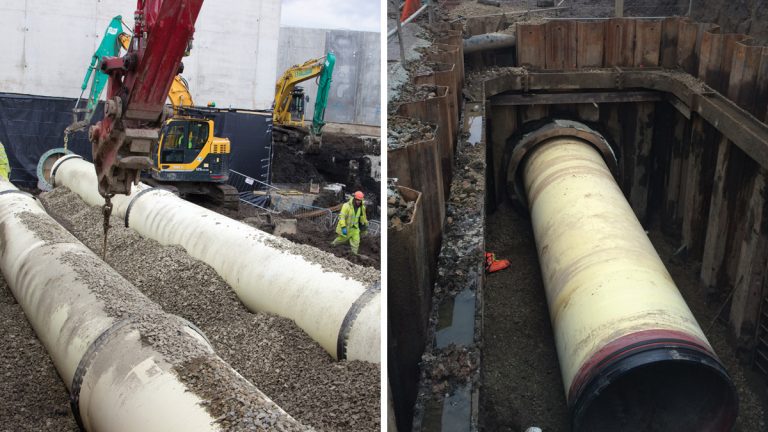
(left) 1200mm diameter Universal PUX twin main and (right) Pamlock PUX coated pipe inserted into a concrete tunnel
Challenges overcome: Threading pipeline through lots of existing services and structures; numerous changes in level and direction of the pipelines; overcame need for concrete thrust blocks through using Saint-Gobain PAM UK’s mechanical anchorage system; pipes pulled through tunnels; some pipes to be positioned on plinths and others laid in trenches.
Key performance information:
- Up to 4.5 bar test pressure.
- Laid at depths of up to 5m.
- Laid in aggressive soils containing, among other things, high concentrations of ammonia.
- Laid between existing structures and roads, resulting in a high proportion of fittings relative to pipe length.
For more information: Saint-Gobain PAM | +44 (0)115 930 5000 | www.saint-gobain-pam.co.uk

